Behind the scenes at the Colnago factory in Cambiago
What does "Handmade in Italy" really mean?
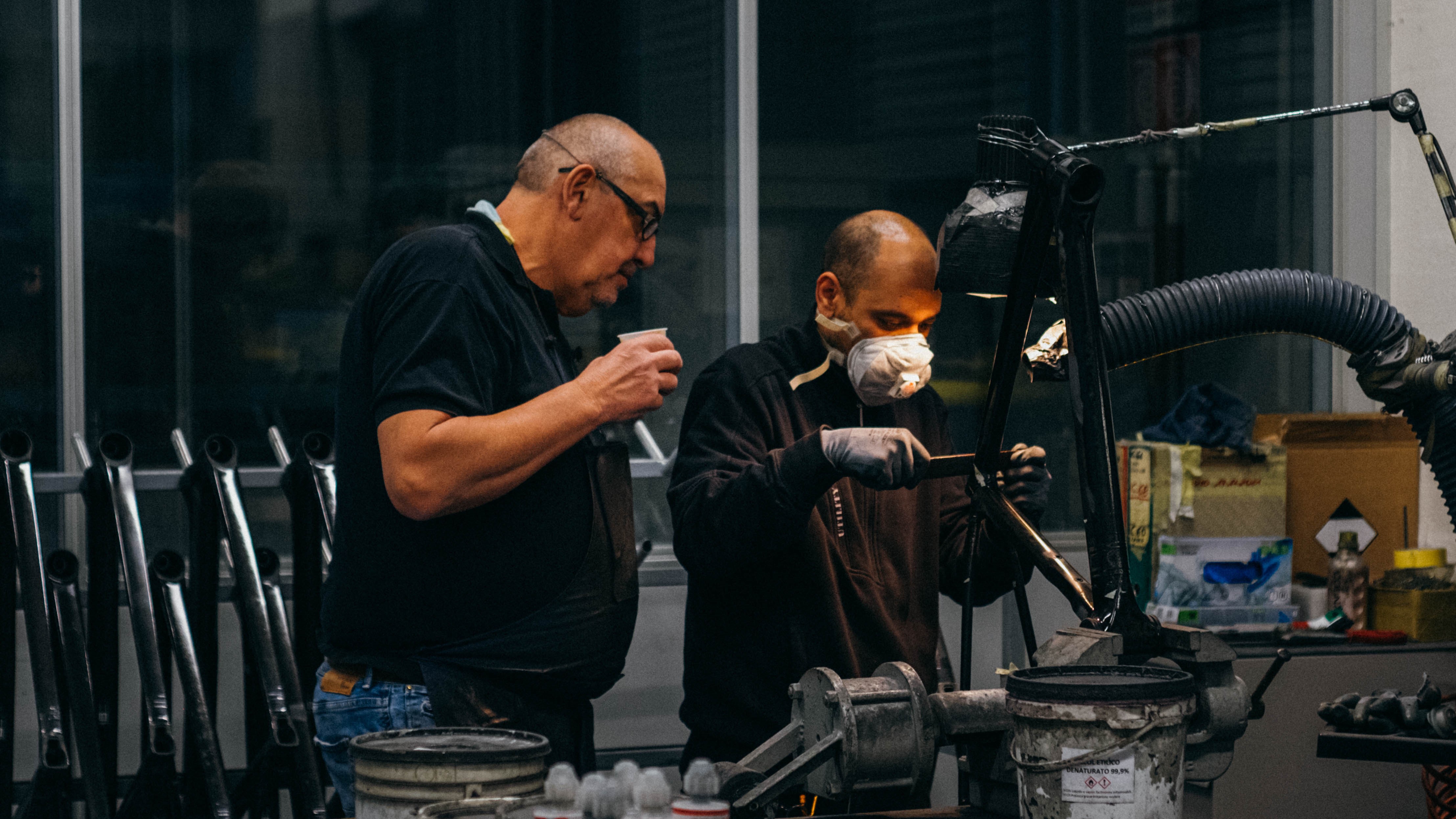
Few brands can call on the heritage that Colnago has at its disposal. Even among the storied history of Italian cycling, amongst the likes of Bianchi and Pinarello, Colnago has a place in folklore a notch or two above. Partially I think it has to do with the association it had in the past to riders such as Merckx, Maertins, Saronni, and Museew, and teams like Mapei and Molteni. Whether for the fact it was good tech at the time, or had a good eye for picking winners, it was a brand that had a hell of a pedigree. It was also never a brand afraid to try new things: Integrated cables, carbon monocoque frames, 26in wheels on the road, aerodynamic tubing, all pioneered on bikes conceived and fabricated in what is now the Italian Silicon Valley for cycling; the northern oval taking in Milan, Bergamo and the surrounding area.
While steel is no longer the material of choice for WorldTour pros, Colnagos can now be seen under UAE Team Emirates, and most prominently under Slovenian phenomenon Tadej Pogačar; no doubt now a name to add alongside the greats of the past. While the V4Rs that he and the rest of the team use are finished and assembled in Italy but created overseas, Colnago has committed to keeping its C-Line - that being the C68, C68 Allroad, and C68 Titanium - an entirely Italian product. The carbon tubing is made in Italy, the tubes are assembled into frames in the Cambiago headquarters, shipped to just outside Pisa for paint, and then sent back for final assembly. Even the 3D-printed titanium lugs are made a half-hour drive away from the brand's base of operations. Its heritage steel frames too, the Master and the Arabesque, are fabricated near the headquarters. In an industry in which the majority of frames are produced in Taiwain, this firm grip on an Italian identity is perhaps key to the brand's longevity.
While in the North of Italy on some other business, I paid Colnago a visit to see how the brand stands today, and was given behind-the-scenes access to the factory floor, the paint shop, and the facility where the titanium parts are created. I also spent some time in the office backroom where countless priceless and historic bikes are just propped up, dishevelled against the walls, but that’s a treat for a separate piece. For now, let’s look at what ‘Made in Italy’ really means, and why the C68 remains such an object of desire for many.
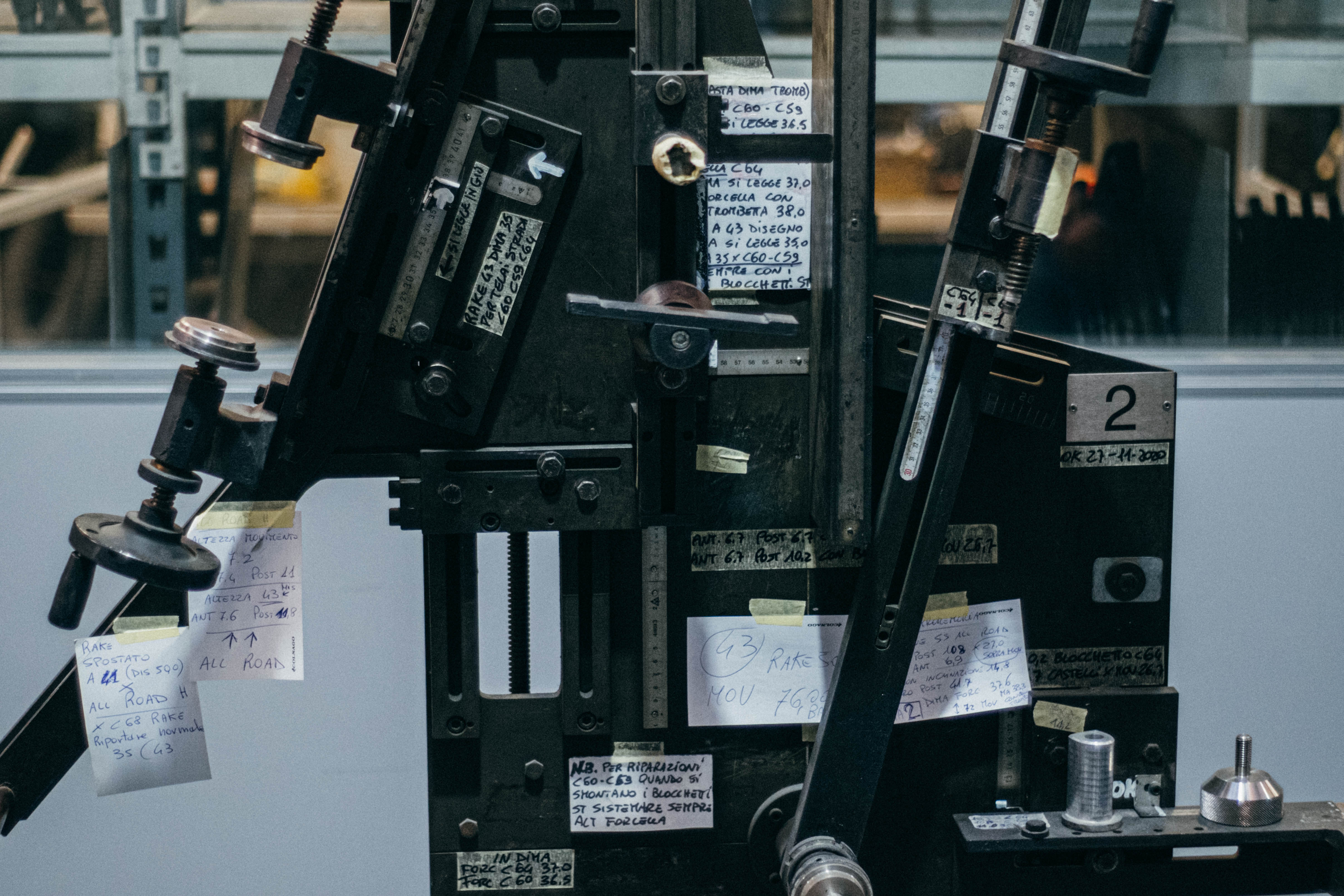
Each of the small army of frame jigs is covered in scribbled notes and instructions
The factory floor
Given the size of the brand in terms of cycling folklore, the headquarters in Cambaigo is relatively unassuming, if you choose to ignore the giant metal globe upon which a bronze recreation of the carbon C42 that Pavel Tonkov used in the 1996 Giro d’Italia sits pride of place like a Christmas angel. Inside the mirrored front doors the entrance lobby is scattered with a handful of bikes deemed important enough to be on display: Titanium frames in Mapei livery, satin Shamal wheels catching the afternoon sun as it pours through the room. Split downtube Masters, terrifying vintage time trial machines with 19mm tubs, and leant up in the corner fresh out of the back of a van, the mud-spattered V4Rs upon which Tadej Pogačar won the 2023 Tour of Flanders.
Beyond the gloss of the lobby, through a heavy black door, you reach what can loosely be described as the assembly line. At the base of prefab shelving units a small army of jigs flanks the entrance corridor like soldiers on parade; which jigs get to spend the day on the shop floor depends on the model and size in production. The jigs themselves have the marks of years of use. The satin sheen of oiled, machined steel. Blackening in places, the odd spot of rust, and covered in notes scribbled in sharpie on masking tape, or in Tipp-ex, or on bits of paper stuck on. Old notes don’t seem to get archived, with one jig having instructions for a C64, a C60, and the C68 Allroad.
At one of four assembly benches, the tubes and lugs are gathered from their respective shelving units and the margins protected with masking tape. A thick, two-part adhesive is mixed up with a palette knife before being applied to both mating surfaces, before slotting the tubes together, wiping off the excess (contained mainly by the masking tape) and placing them all in the jig. Occasional persuasion is needed with a rubber mallet to get the fit just so, before the whole shooting match, frame and jig together, is wheeled into the oven for initial curing.
The lugged construction is the hallmark of the C series, but the modern C68 only really makes a visual point of highlighting the lugs at the headtube and at the top of the seatpost. The remaining joins at the bottom bracket and the seat stays are treated to an ‘aesthetic wrap’ of non-structural carbon. This is applied as a series of pre-cut, sticky-backed carbon strips that are applied over the slightly recessed join area, before being tightly bound in translucent blue heat shrink and placed in the oven for a final time. The wrap constricts, smooths, and forces any excess adhesive out of the area. Despite its best efforts though it doesn't leave a surface conducive for painting and so, following this final cure, the frames are sent to a final room for deburring and racking up for transit to an industrial estate just north of Pisa, about three hours down the road.
Get The Leadout Newsletter
The latest race content, interviews, features, reviews and expert buying guides, direct to your inbox!
Frames fresh from the paint shop arrive back in Cambiago for assembly and shipping; banks of frames sit in the combination space that is the warehouse and building station. Dozens of stock colour frames make for orderly rows, but behind them, there’s the chaos of the custom options. Some individual frames for customers with specific tastes, alongside clusters of three or four matching frames in the colours of high-end businesses, perhaps something for a shop floor, or a Sunday treat for board members?
Regardless of the colour and model, each frame is tagged with a QR code so as to avoid any mixups, and assembled from start to finish by a single person. Yes, I’m sure Henry Ford will be turning in his grave at the lack of an assembly line, but I’m assured that this way ensures the employees are more connected to the final product, and take more pride in their work.

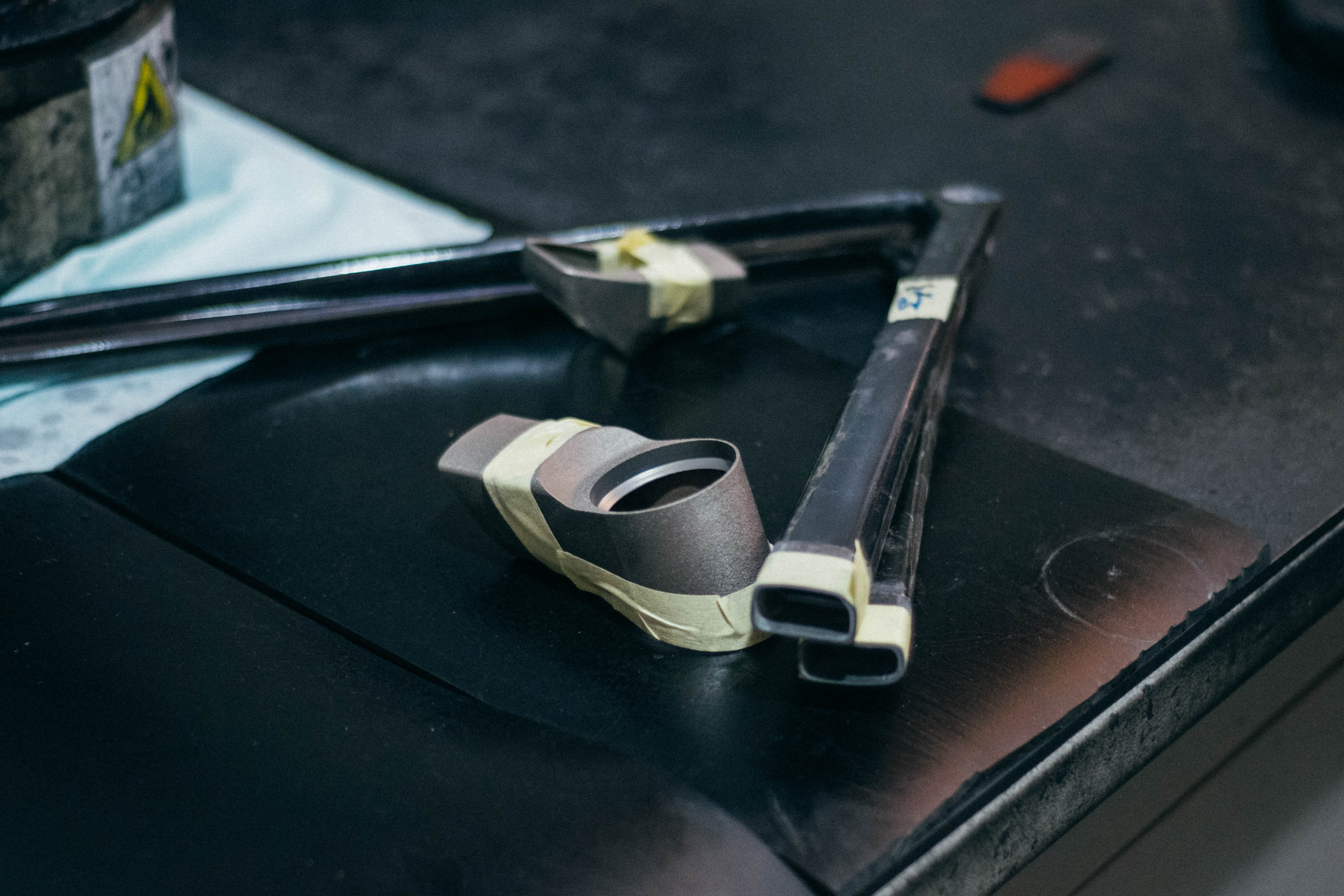
Each C-Series frame starts out as a pile of tubes and lugs on a workbench
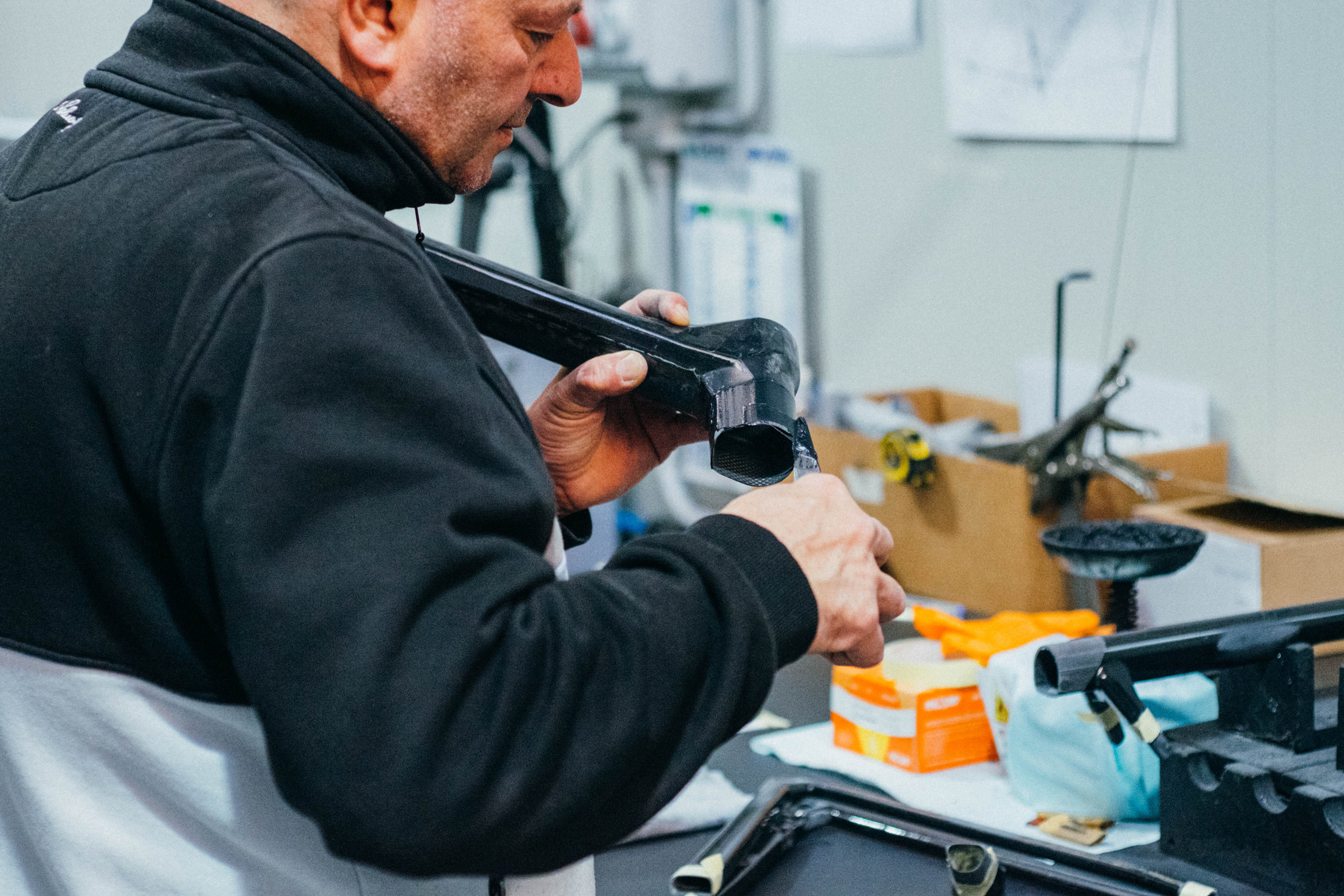
The glue is mixed up and then applied to the mating surface, and everything is gently persuaded into place with a hammer
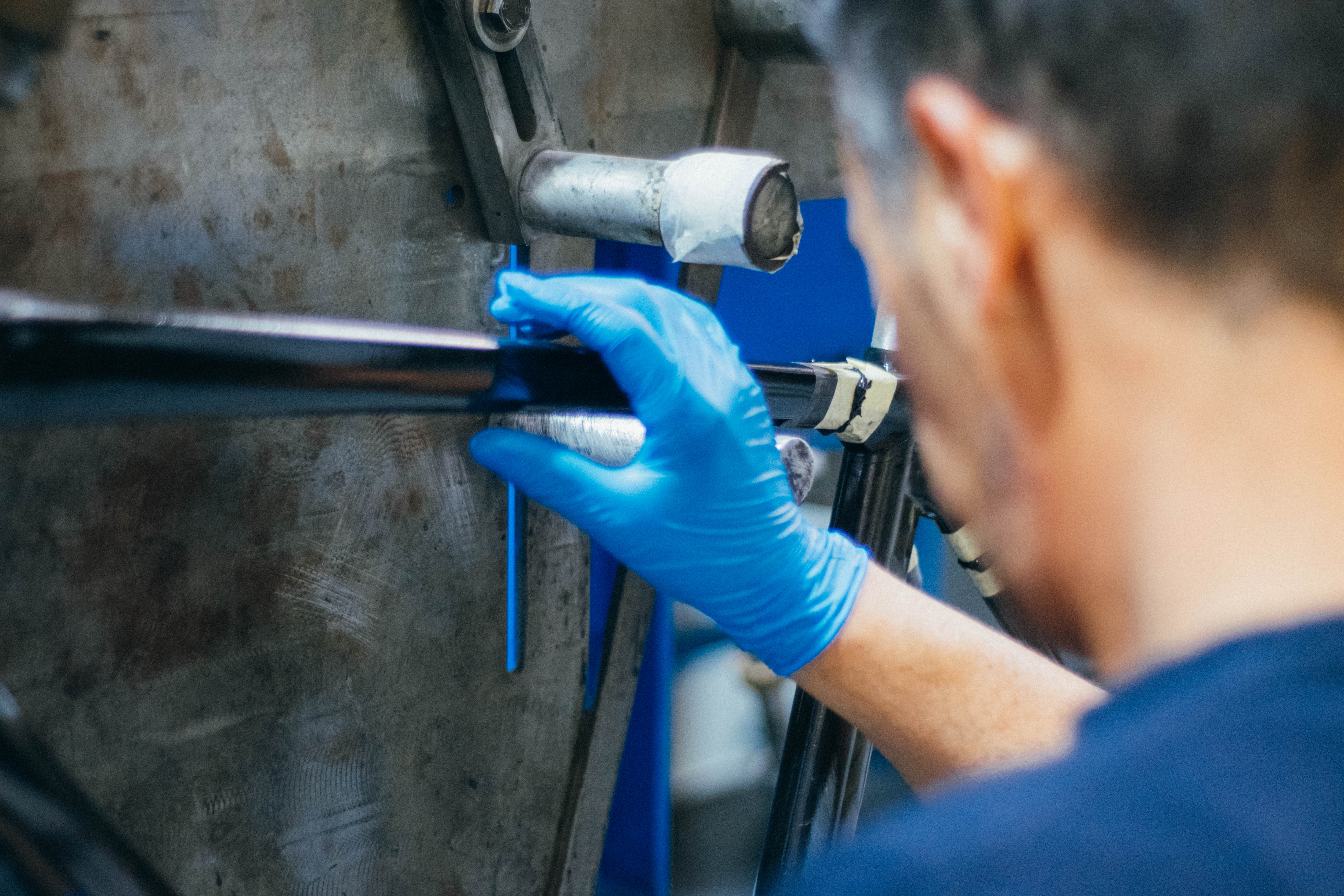
The assembled frames then go into a jig to hold them in place for curing and to check the alignment is correct
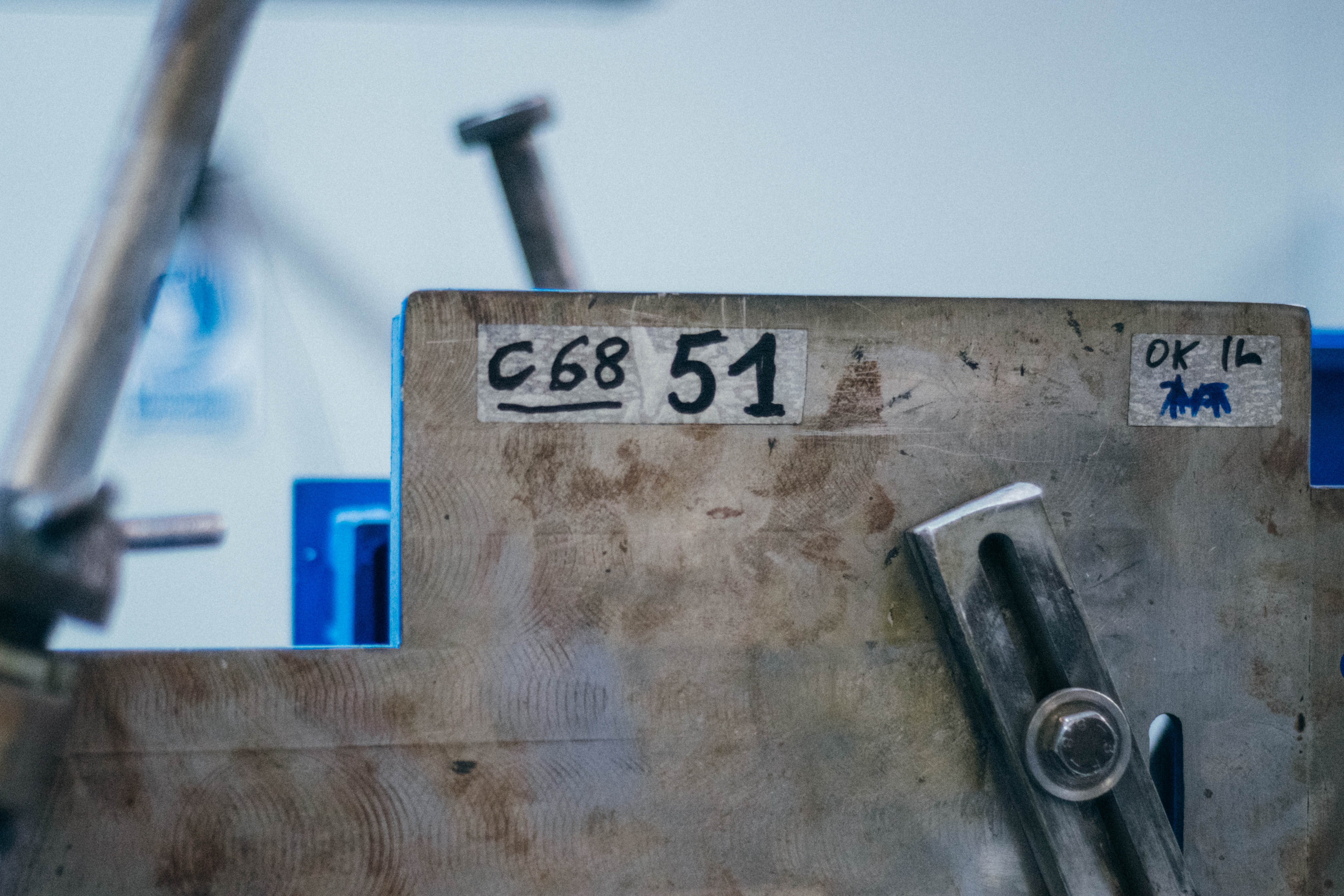
Each jig is both model and size specific
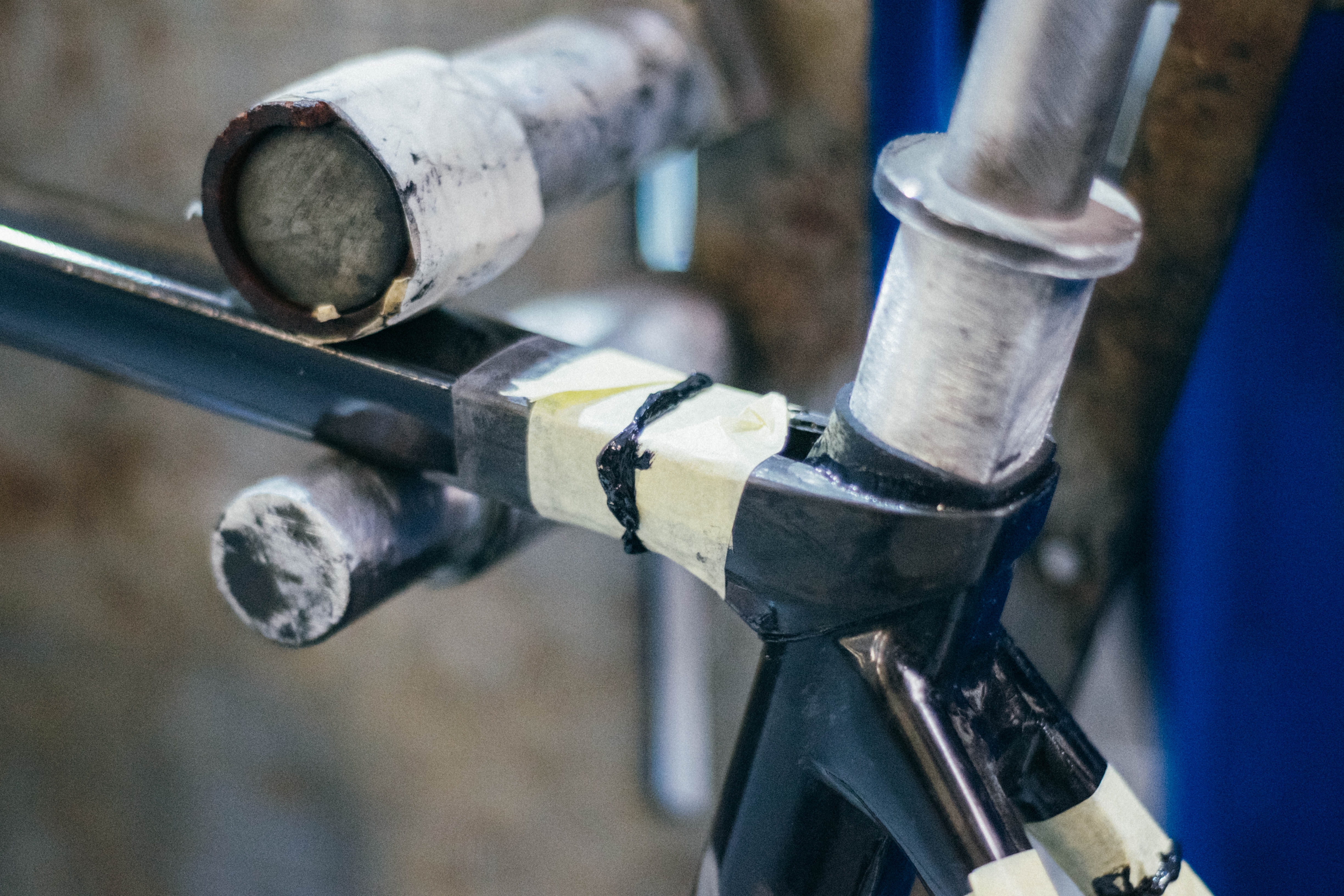
A border of masking tape at each join reduces the need to sand back any excess after curing
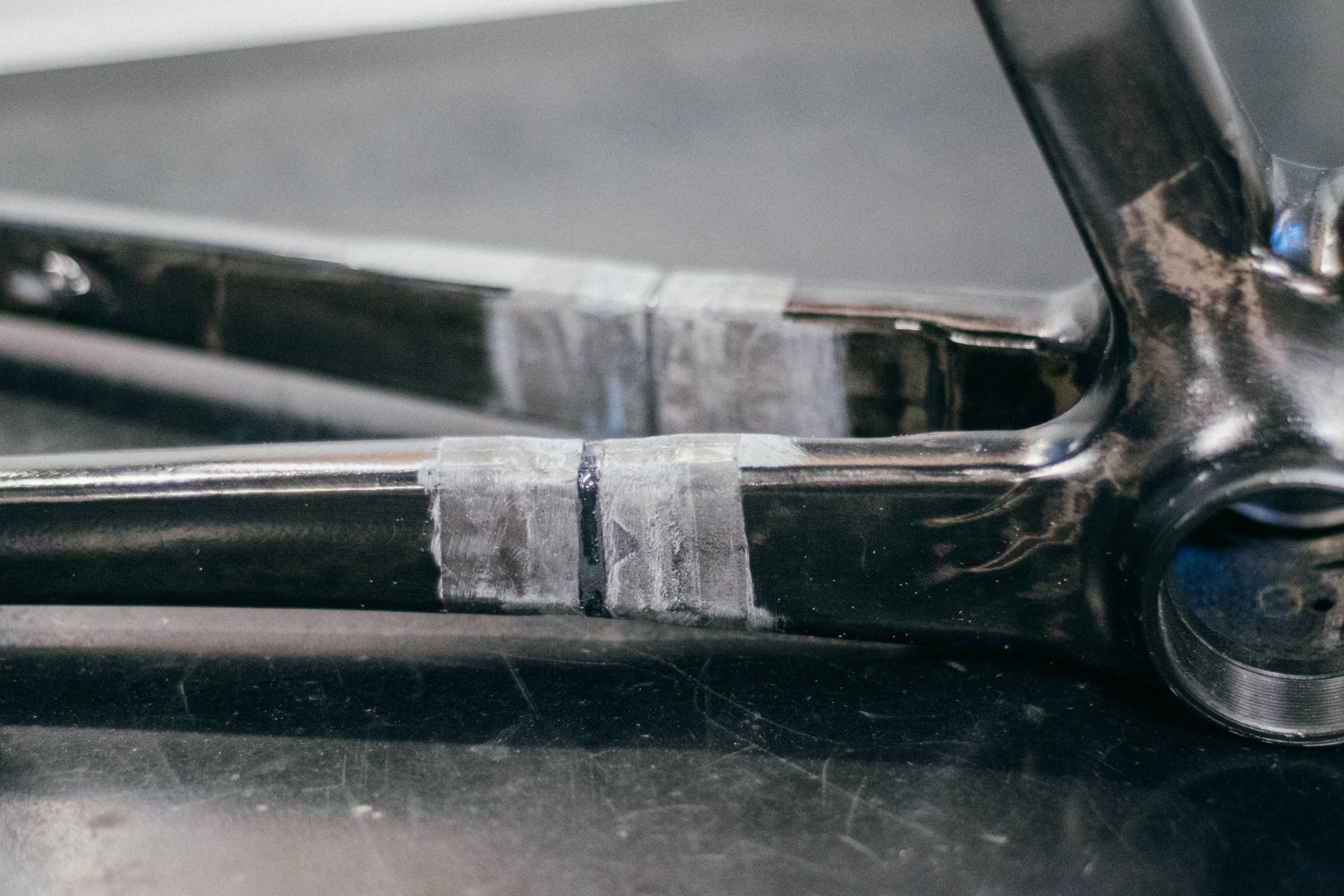
After curing, the masking tape is removed leaving a raw join at each lug

The joins at the rear of the frames, besides the seat cluster, are wrapped in a layer of aesthetic carbon, pre-infused with a bonding agent
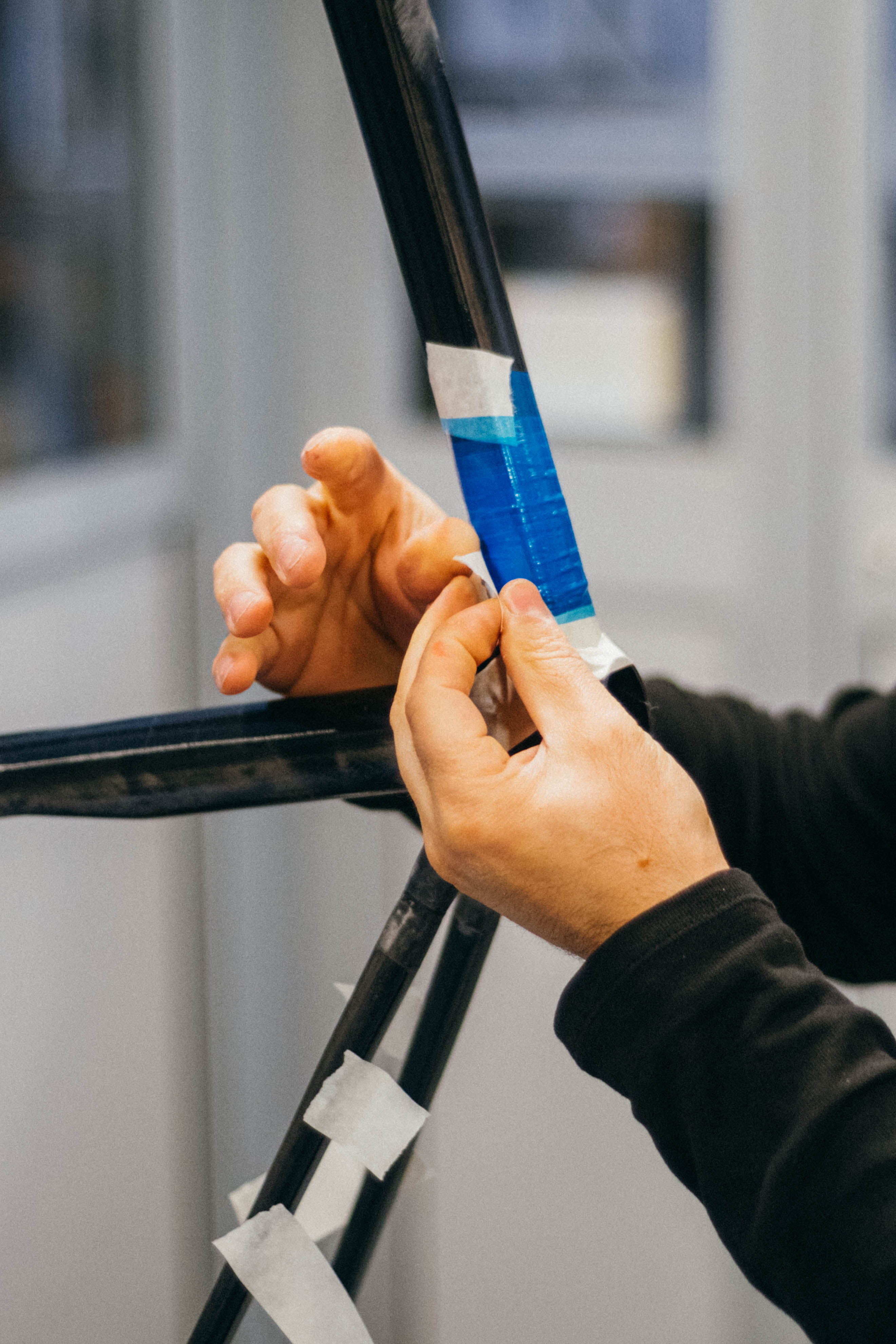
The aesthetic covers are then bound tightly with blue, heat shrink plastic that, upon a second trip to the autoclave, will construct and squeeze any excess bonding agents out of the area
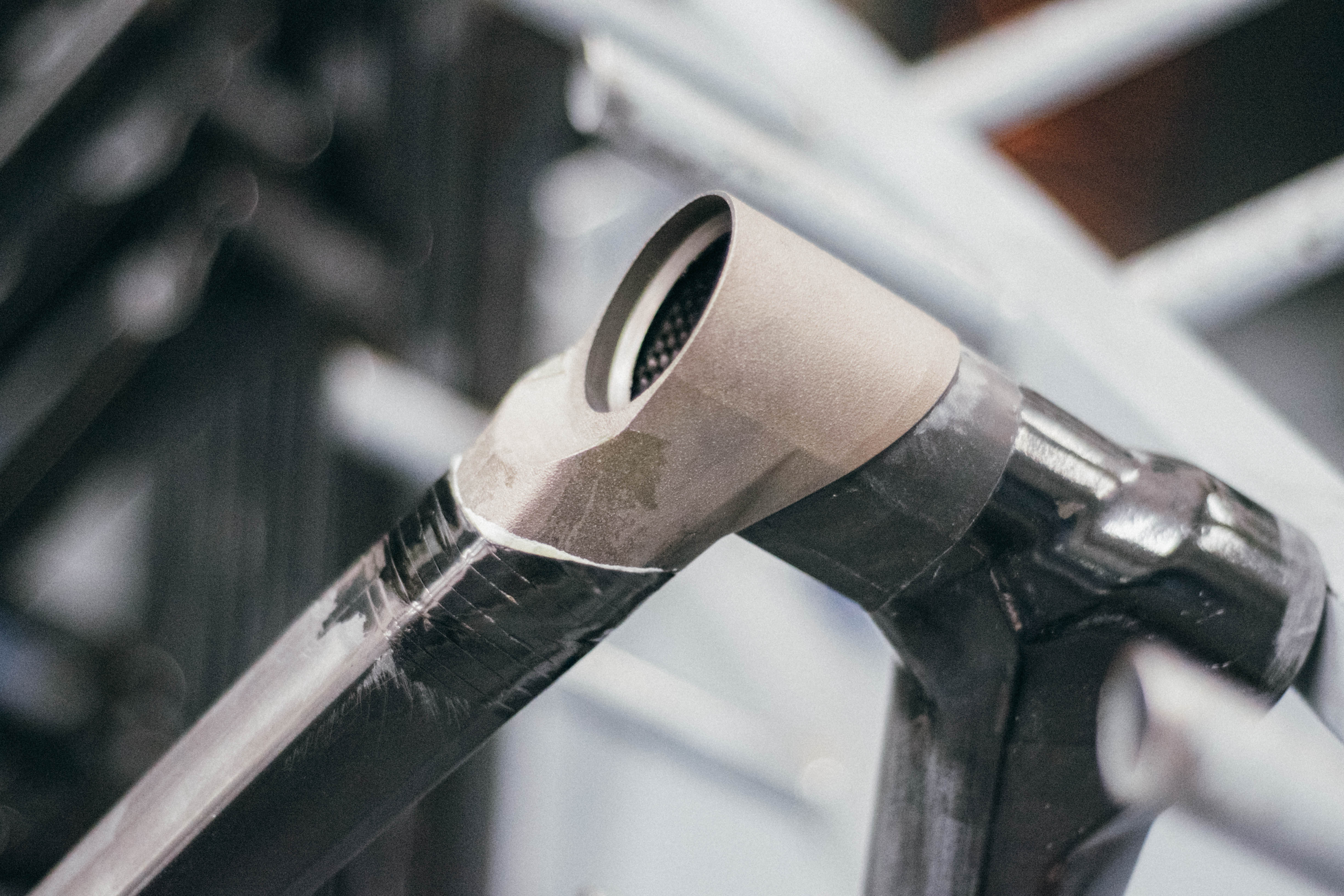
Following the final cure the frames are racked up for hand finishing

Any burrs or excess material is filed and sanded away by hand, here by an apprentice under the tutelage of an experienced hand
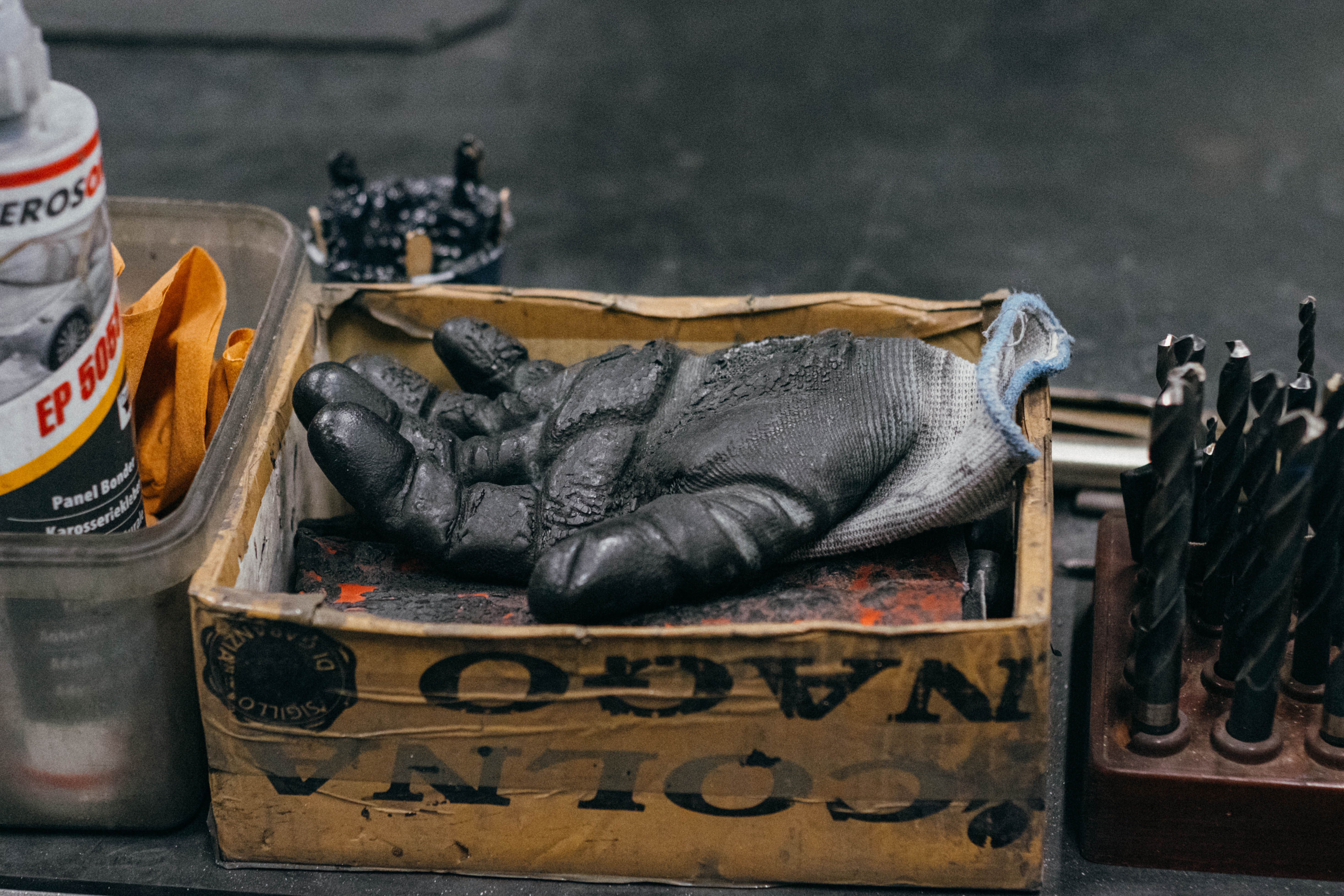
Carbon splinters and resins aren't great for the hands, so gloves are a must
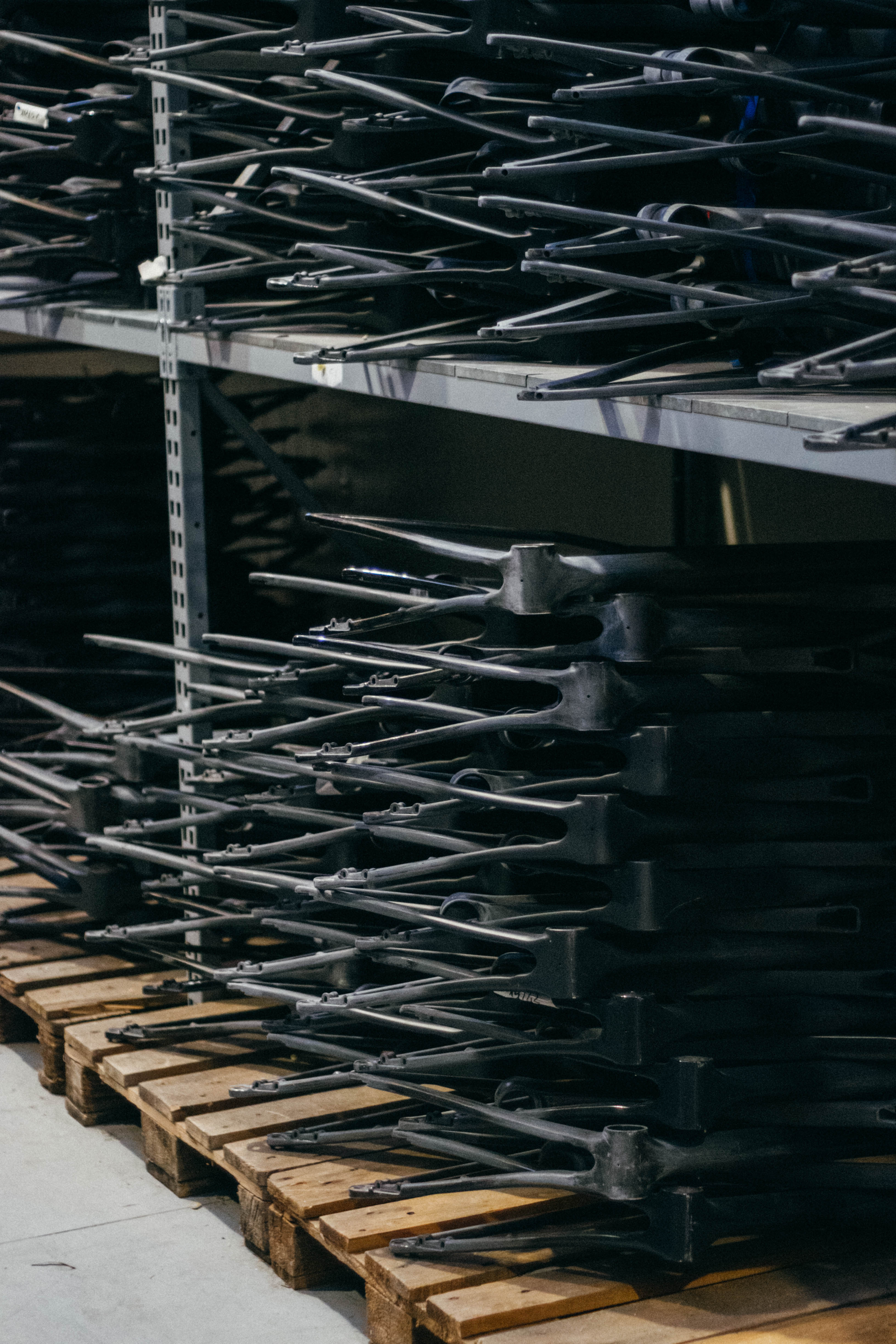
Ready to be sent to Pisa for paint, the finished C-Series frames are racked up by size
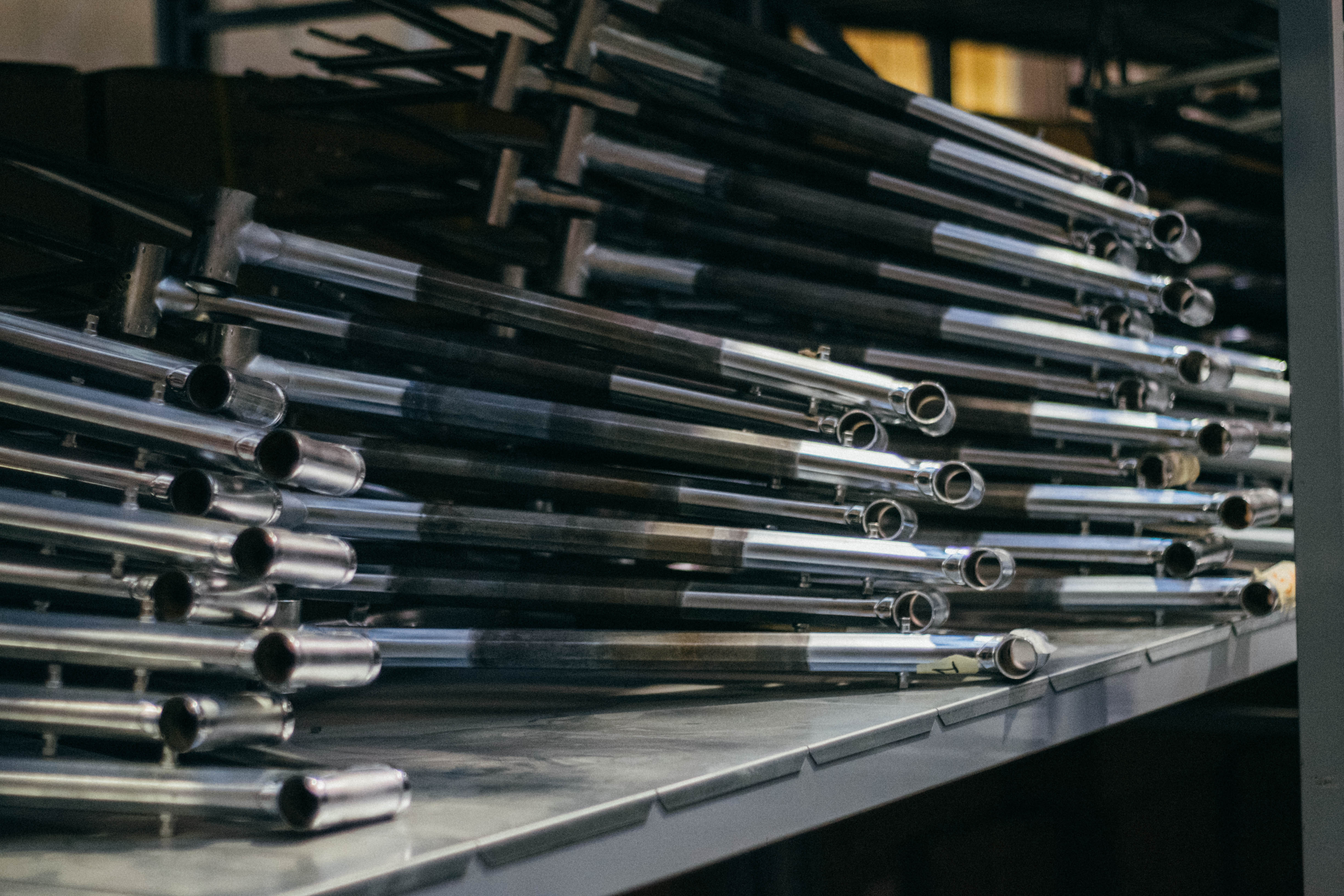
Rows of Master frames also sit here in the factory, fabricated locally
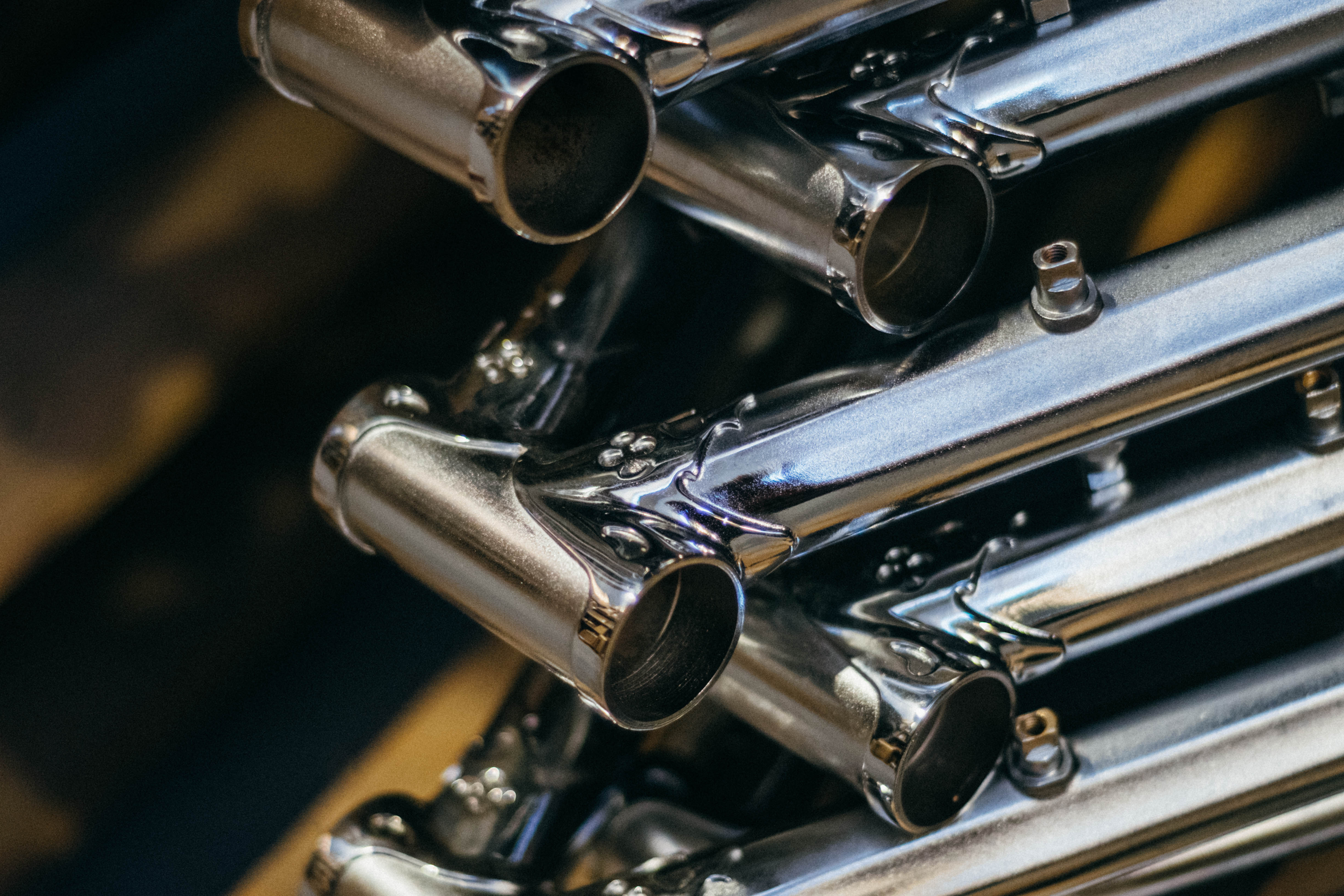
The lugs of the master frames are chrome dipped to achieve that mirror shine
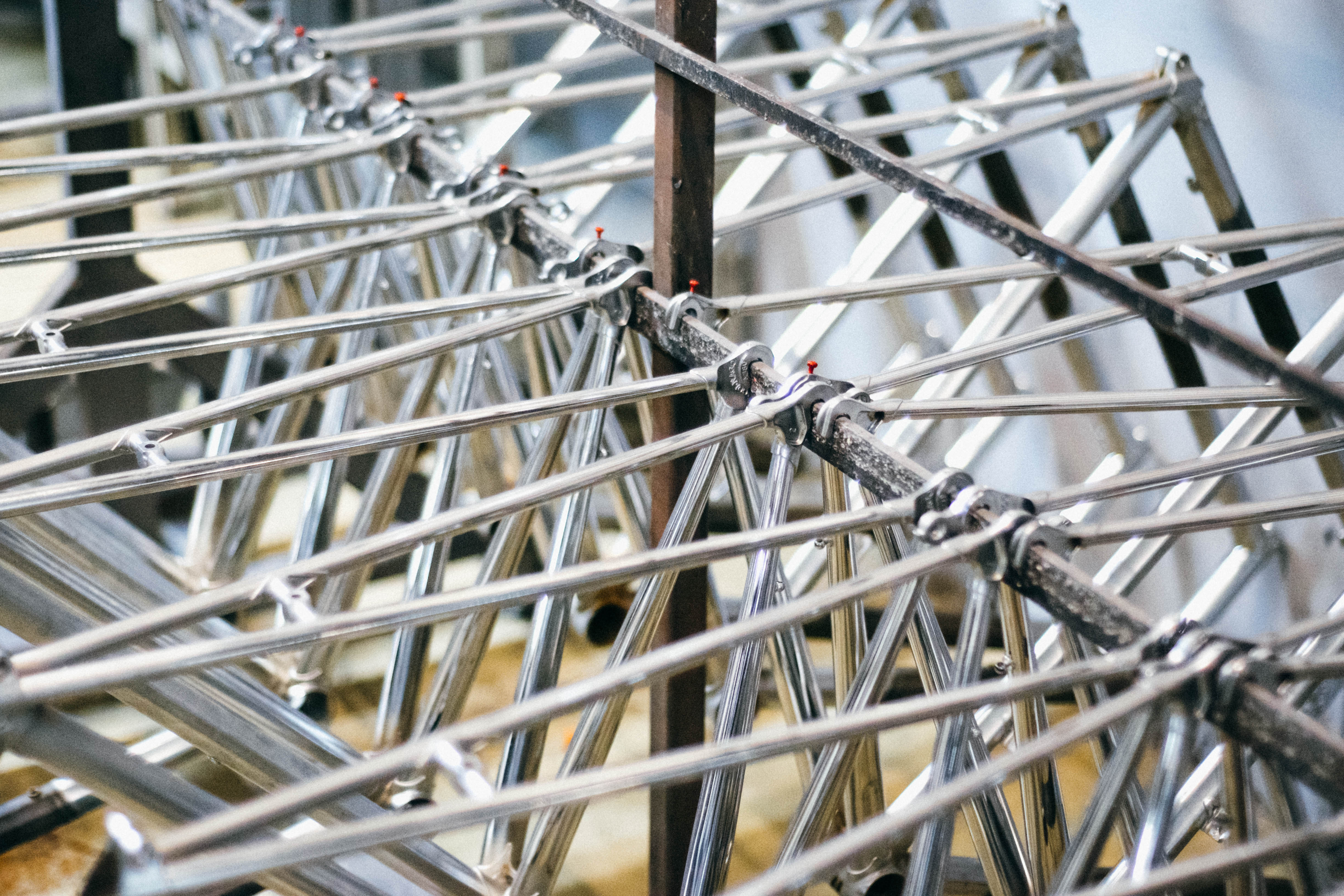
A set of master frames arrives for inspection before heading to the paint shop
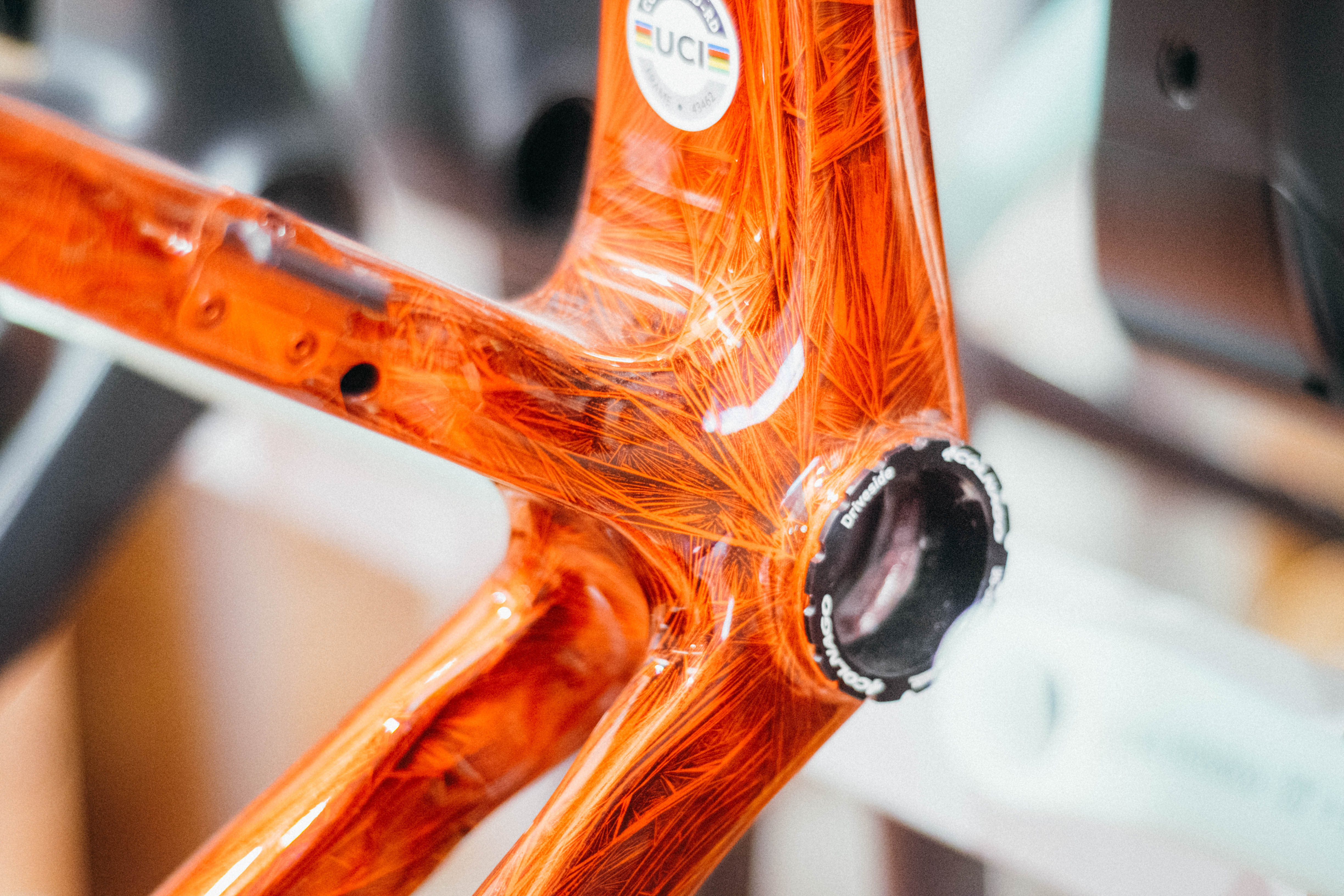
In the warehouse, you get to see some non-standard paint schemes. including experiments in chemical etching seen here to create a crystalline effect
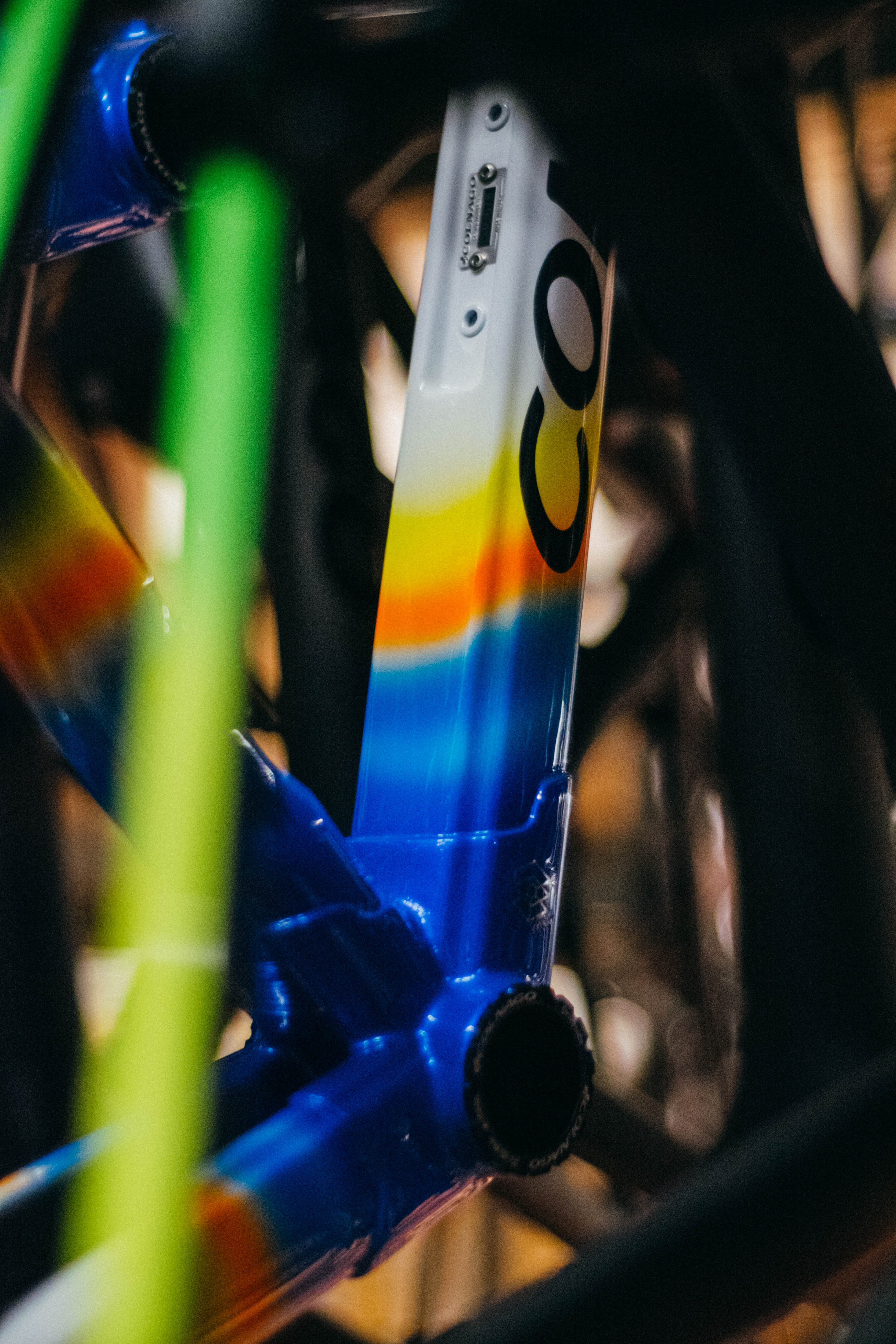
There are some beautiful throwback jobs on the racks too, usually produced in small batches of five or so, rather than one-offs

Pick your poison, the array of custom colours in the warehouse was quite fantastic
The paint shop
While the Colnago factory at its headquarters didn’t feel overly modern, it didn’t feel dated by any stretch. Bicycle construction isn’t aerospace for the most part, especially if you dive into steel frame construction. That being said, visiting Pamapaint was like shooting back a couple of decades. Painting is inherently a messy process though…
I was greeted by Massimo, the owner, and the man responsible for all of the iconic, outlandish Colnago paint jobs of the last few decades. The neon fades, the wee little man on the top tube, the airbrushed Ferraris. Yes, when you think of Colnago you think of Ernesto, but in an era of round tube ubiquity it is perhaps Massimo who is responsible in a large part for the brand's identity.
The frames arrive from Cambiago and are immediately keyed for priming; finely scratched all over to allow the primer to stick. In some cases the primer also acts as the base coat of paint: The V4Rs in the UAE Team Emirates or UAE Team ADQ colourways use a black primer/basecoat combo, while the C68 Titanium uses a gold base coat which is masked off to provide accents. This is sprayed on in a large pressurised booth and then baked hard.
While I was there, a fresh batch of V4Rs frames were in for the UAE Team Emirates colourway. Out of the oven, once the juices run clear, there’s a fair load of masking to do. The UAE scheme is a simple paint scheme in the grand scheme of things, but still requires hand masking, initially with fine, flexible orange tape to get the outlines perfect, then wide masking tape to cover the rest. Once the key areas have been shielded the silver glitter effect is applied using an airbrush in one of two extremely crusty paint booths; I imagine an Italian paint booth is like an Italian Mokka pot: never cleaned for fear of losing some unquantifiable good vibes.
The volume of paint needed to produce the desired result is minuscule. Just 0.3ml of silver glitter finish is used, and it takes several minutes to apply correctly, to get the fade into black just so. Silver glitter is just a clear lacquer with the right amount of flake in it, but everything else requires a bit more work when it comes to getting the mix right. Massimo proudly tells me he never uses a colourimeter, and can mix everything perfectly by eye. While he told me this he took two black paints, poured them onto some metal, and told me one was far too brown and needed yellow adding, and the other was too blue. To my eyes they were identical, so I’m inclined to believe him. Breathing solvents for 50 years probably does wonders for one's colour perception.
Paint, too, is slightly at the whim of the conditions. One batch may be perfect for the morning, but a change in humidity or temperature as the day progresses can throw things out of balance, and so key colours are mixed up in larger batches in a central room and piped around the shop to reduce the influence of the climate. This feel for the paint is why Massimo also prefers to hire his staff when they’re young, train them up, and retain them. There are some things that take years to master.
In almost all cases painting is a process done by hand, but in the finishing room, where the frames are checked for defects and hand polished if necessary, there was a large gantry tucked away behind racks of masking paper, covered in nozzles. Powered by Windows 95, this was effectively an inkjet printer capable of producing whole bike paint. If you’ve ever seen the Gazzetta Della Sport paint job, that was done on this, but even on an automated machine Massimo still had to constantly adjust the paint flow valves while it was running using two Phillips Head screwdrivers.
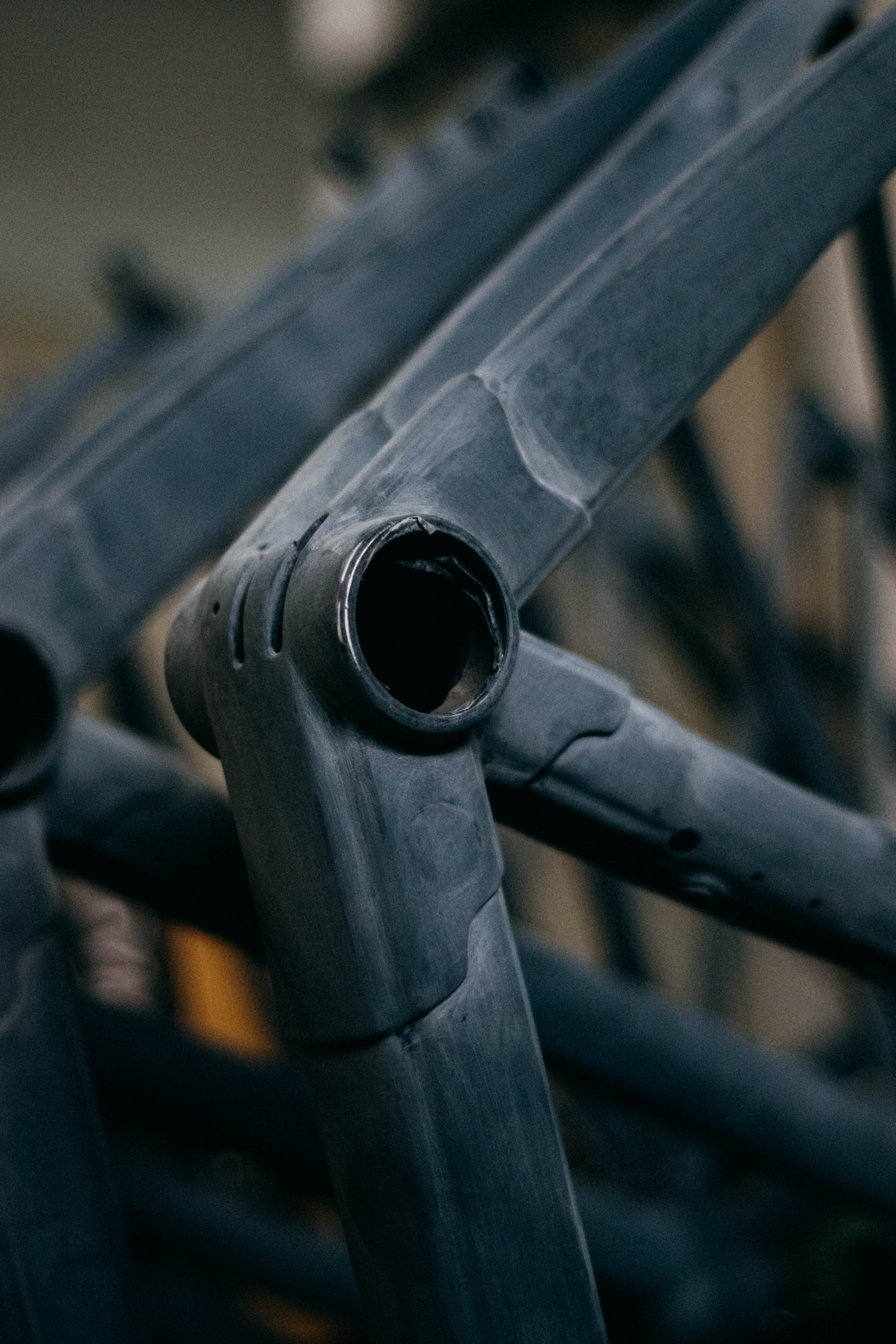
Frames fresh from the factory are immediately keyed by hand to rough them up and allow the primer to stick
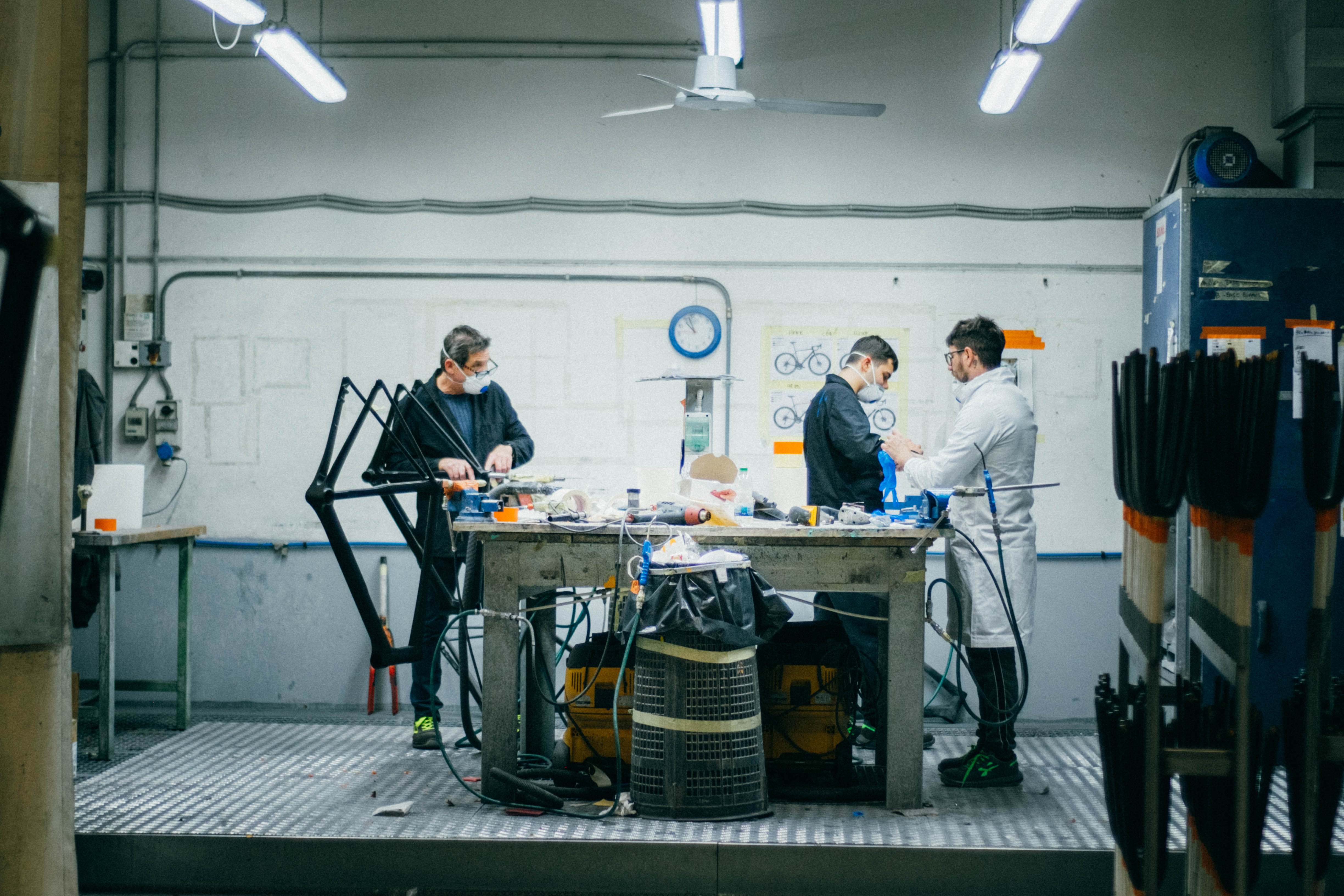
They keying area only has space for a few frames at a time
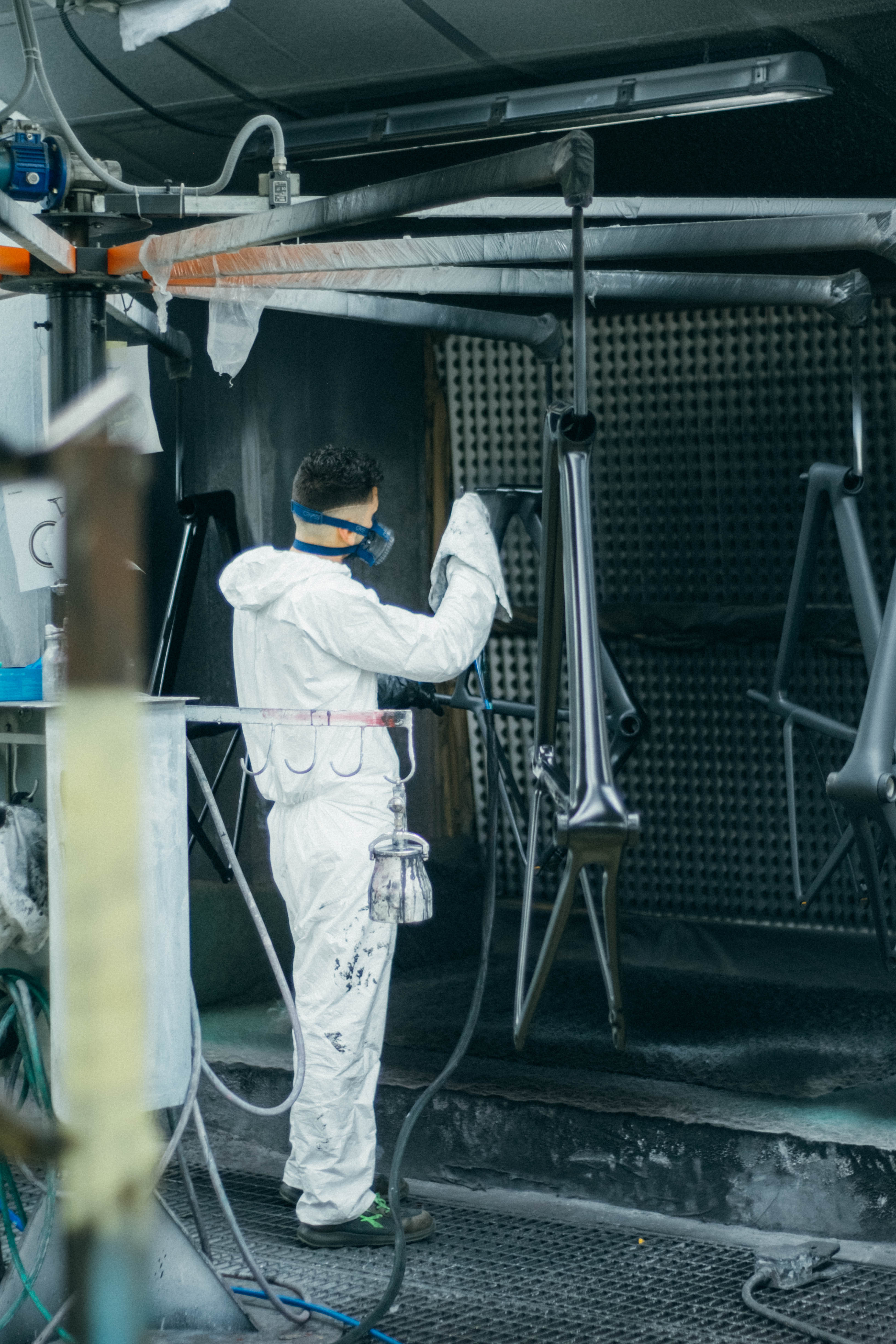
Into the priming booth, several frames are hung on a spinning carousel and primed in batches
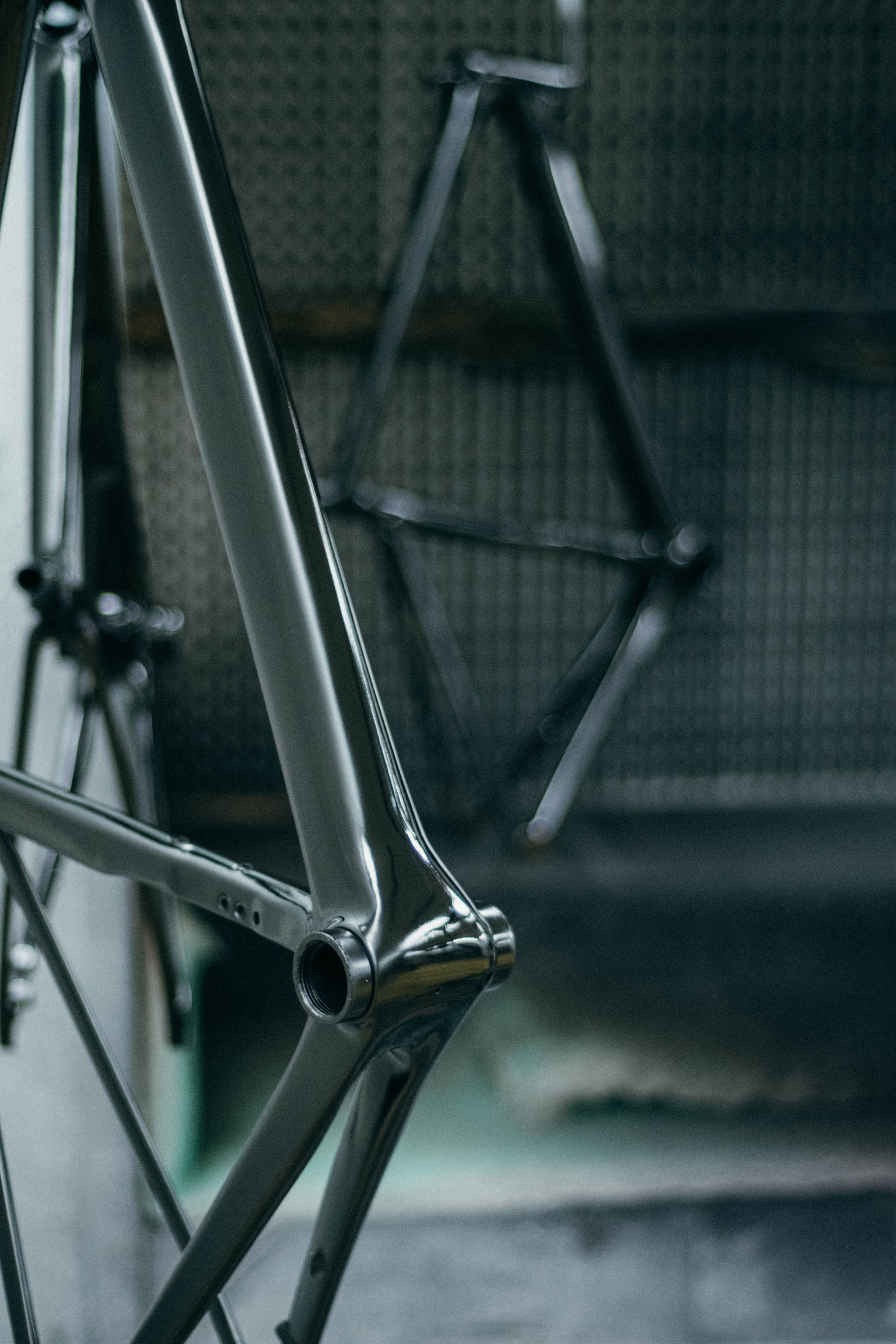
Once dry to the touch, the primed frames go into the oven for an initial cure

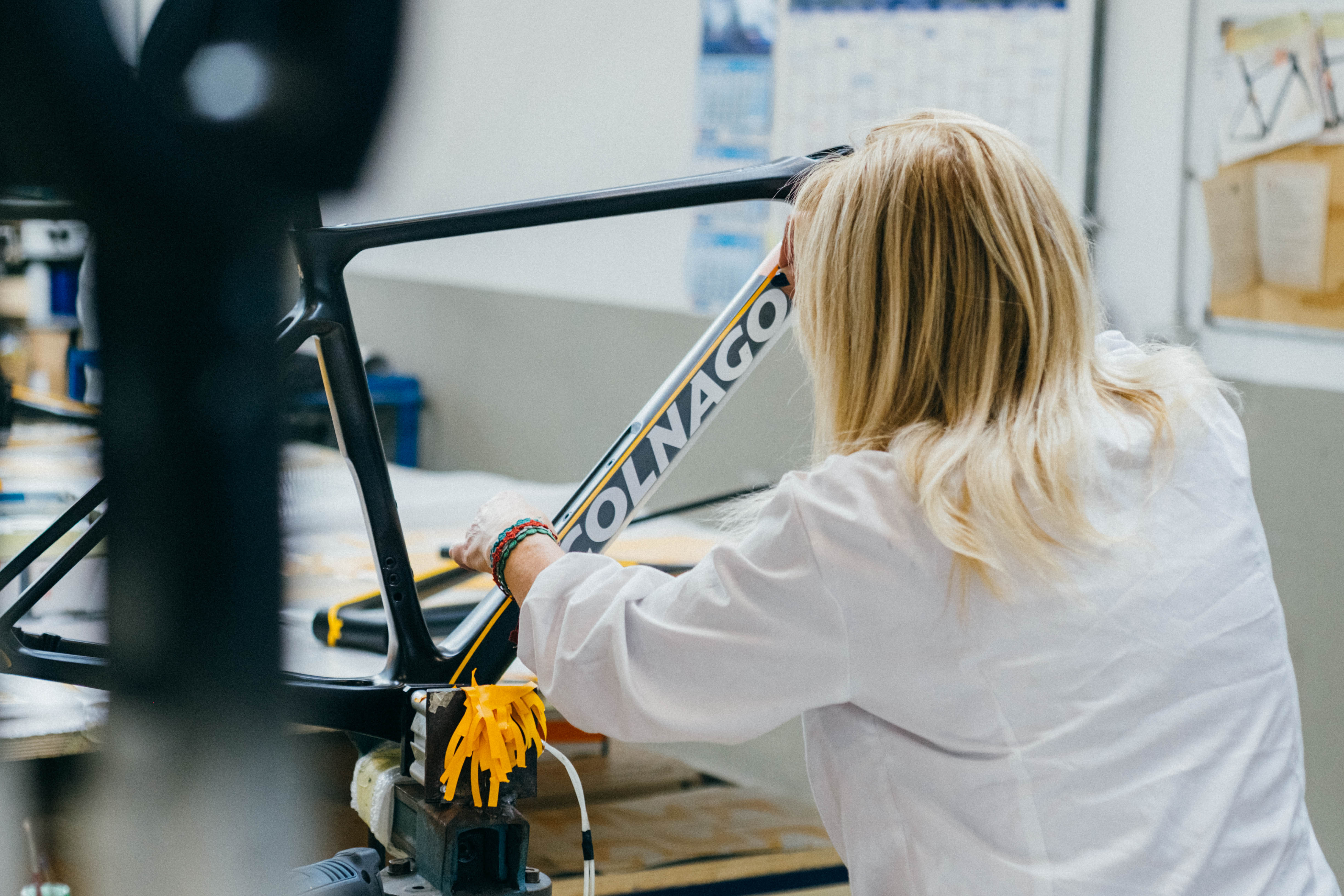
Masking is the fiddly bit; accuracy is key here as any misalignment throws the whole scheme out of whack
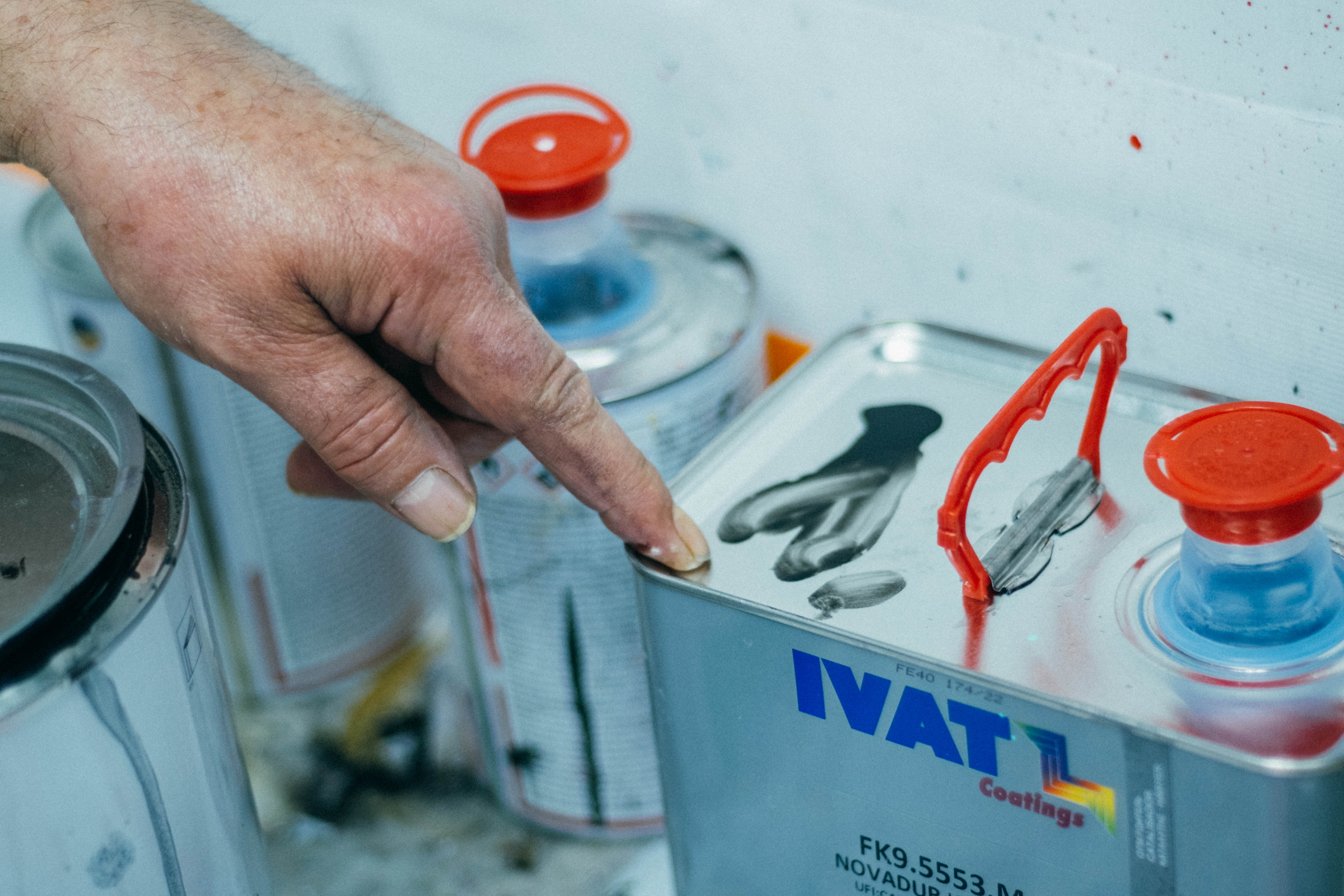
Massimo mixes all the paint by eye. This black is too brown, apparently
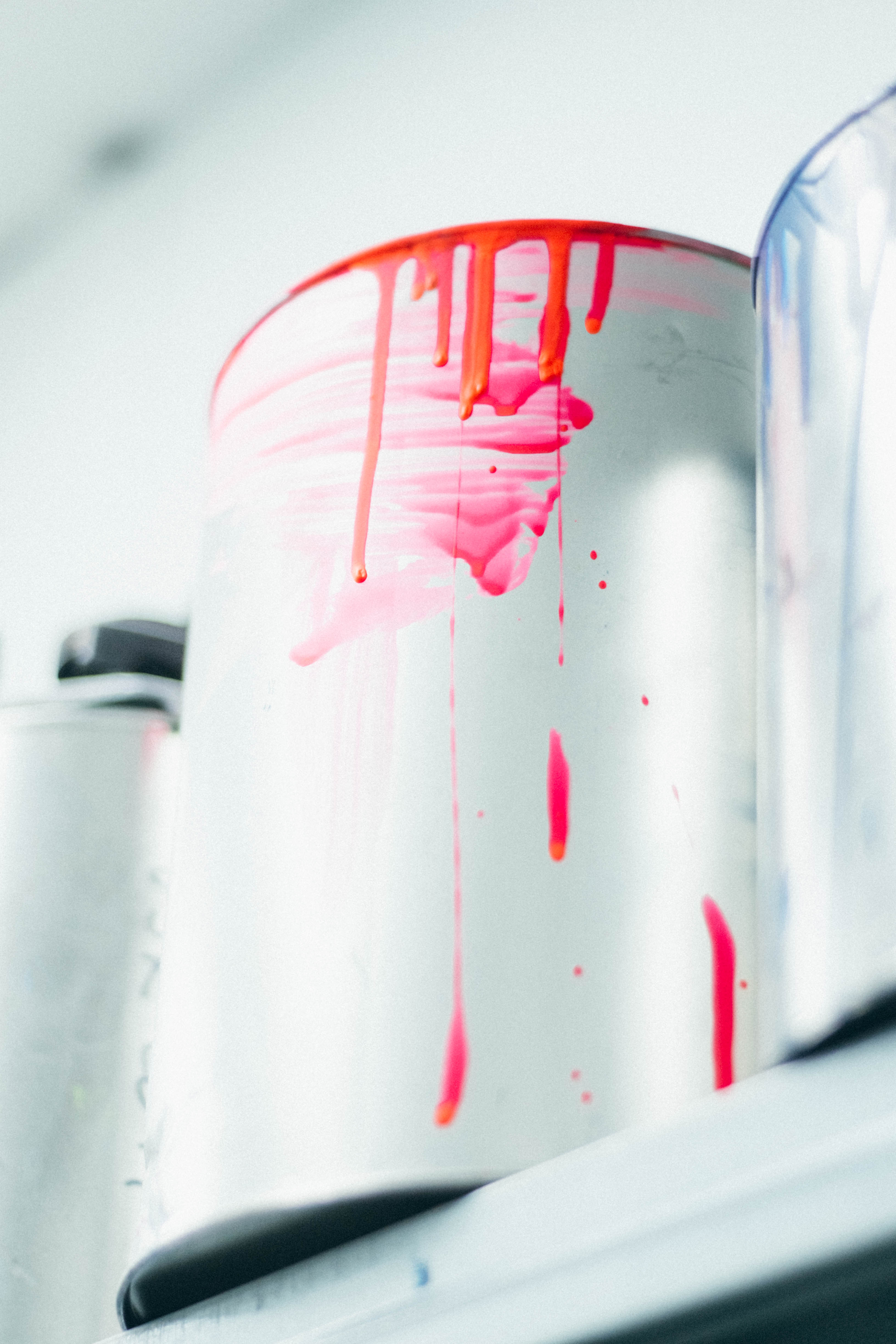
The hot pink and other neons of old don't get as much use as they used to

Key colours remain racked up in readiness
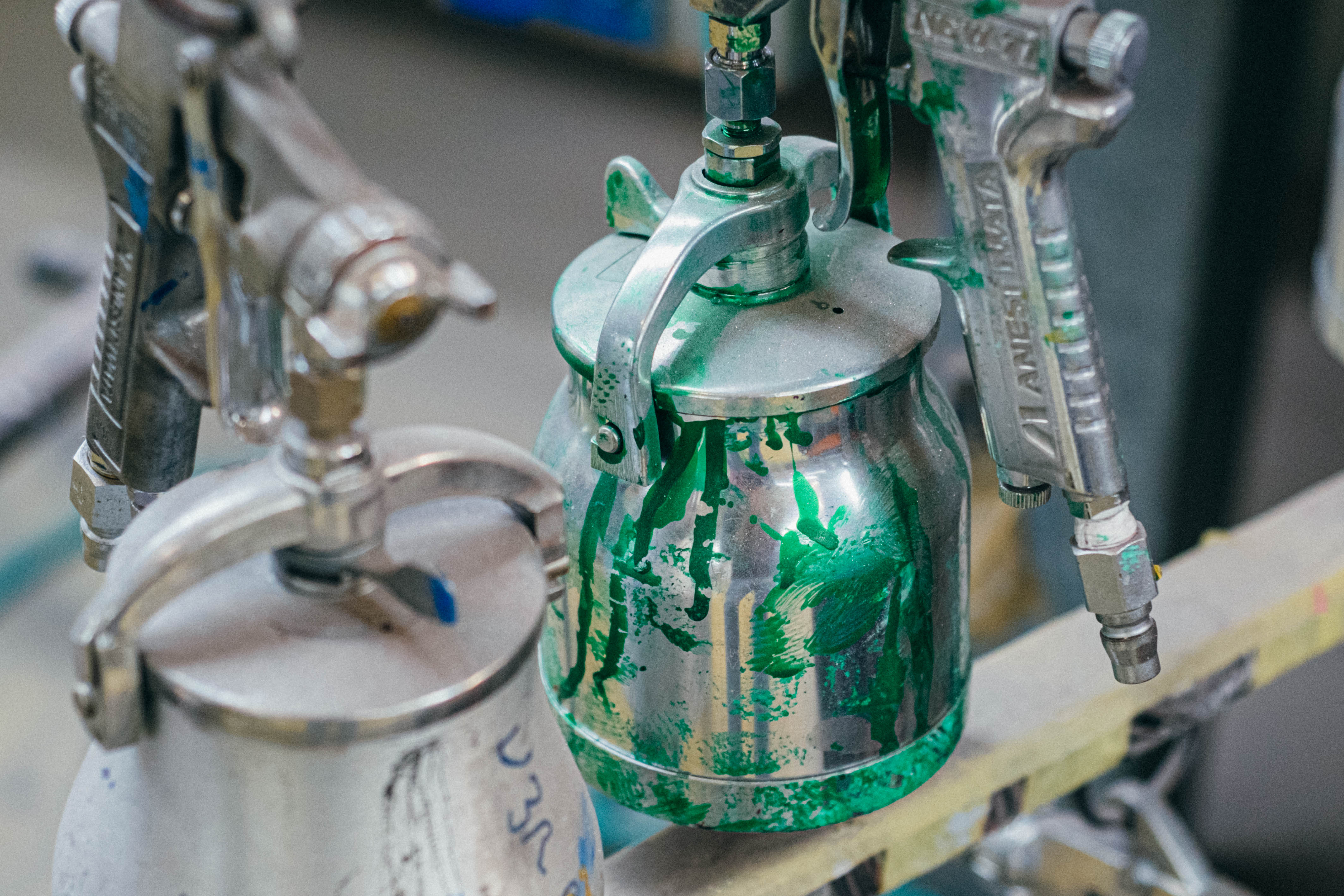
These pots attached directly to centralised air hoses, providing propulsion and aerosolisation to the paint
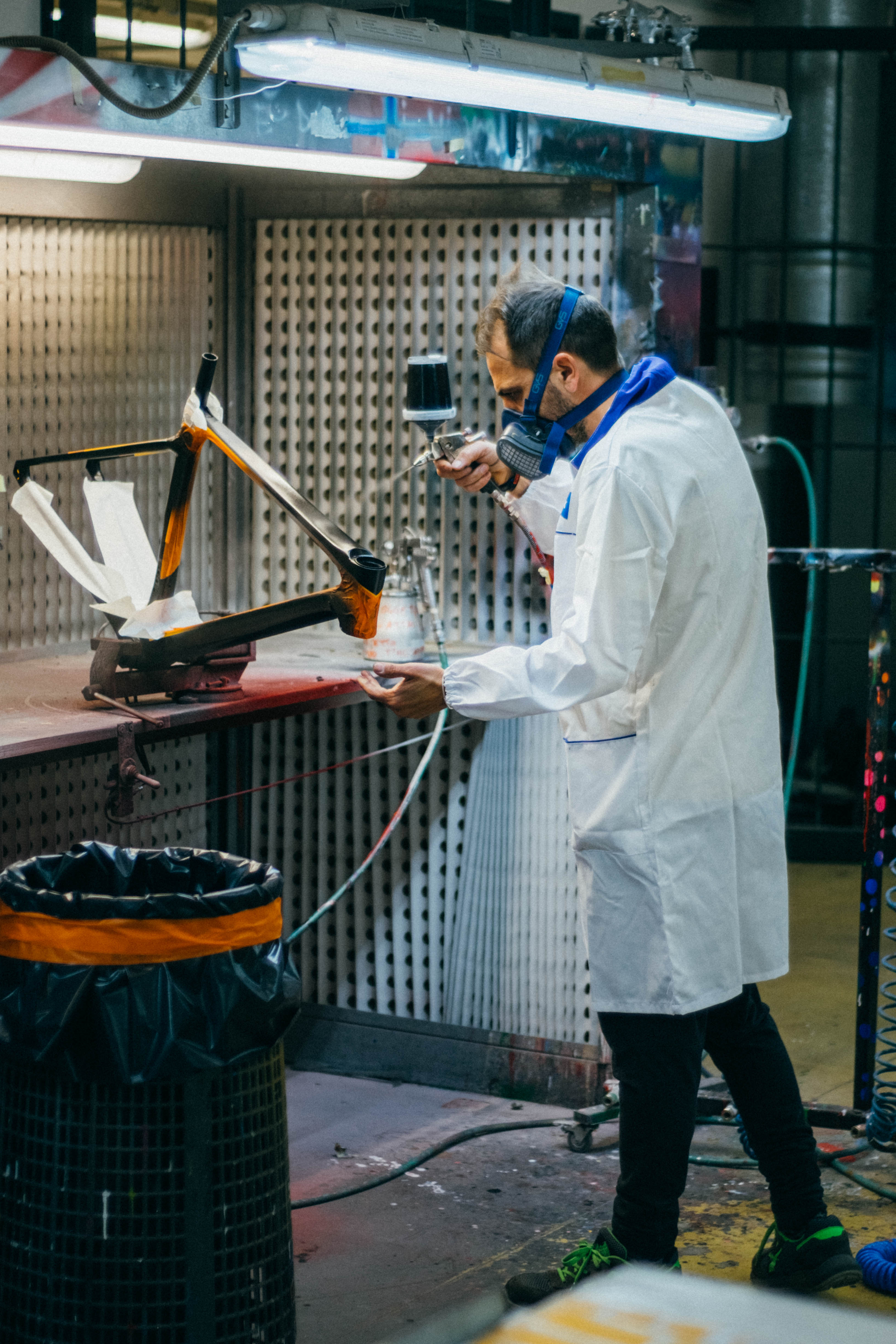
Gently does it; the silver glitter fade is applied to a V4Rs in UAE team colours
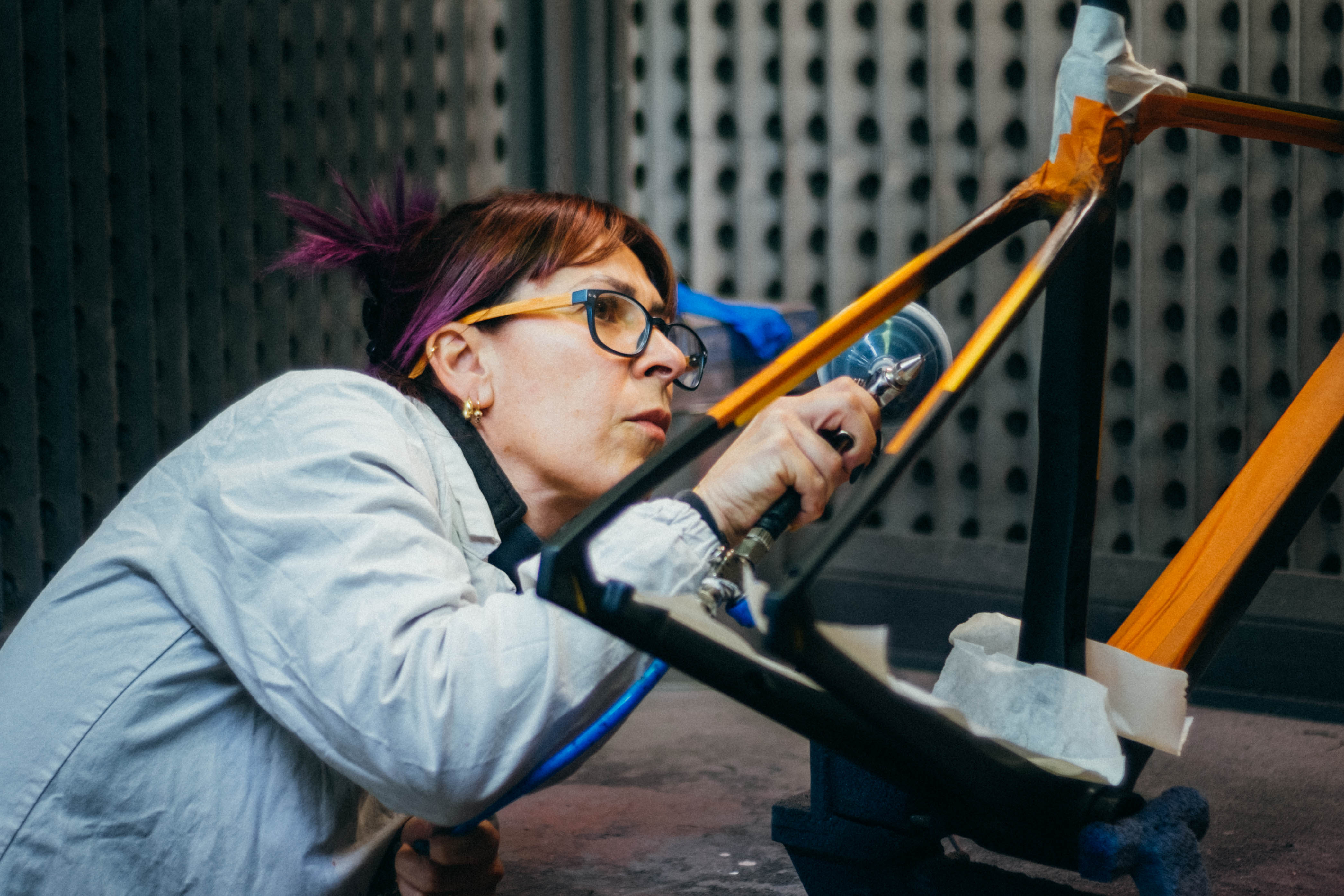
Each frame only uses 0.3ml of silver glitter paint
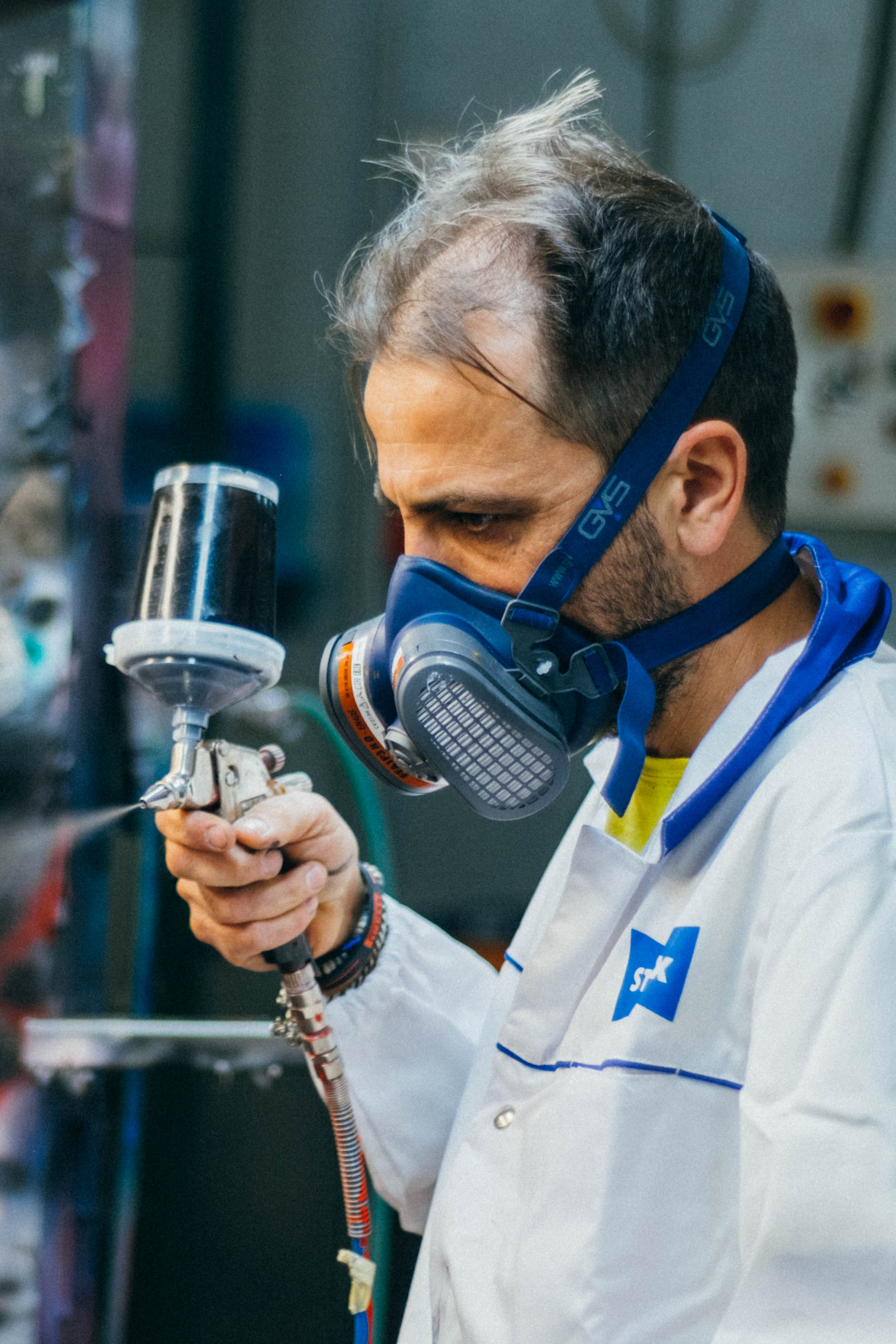
Masks are important, but apparently not totally mandatory
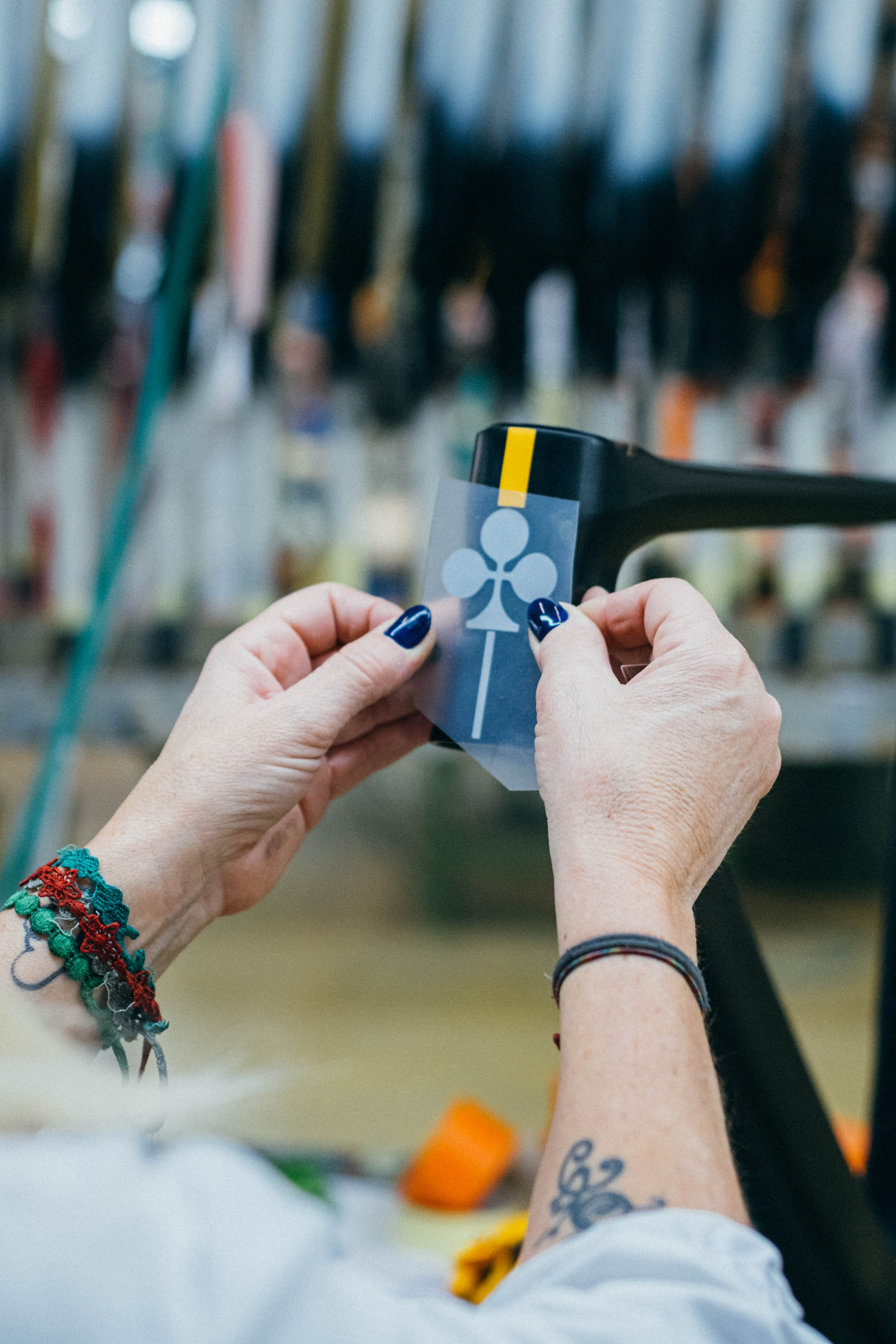
The final decals are applied, ideally bang smack in the middle
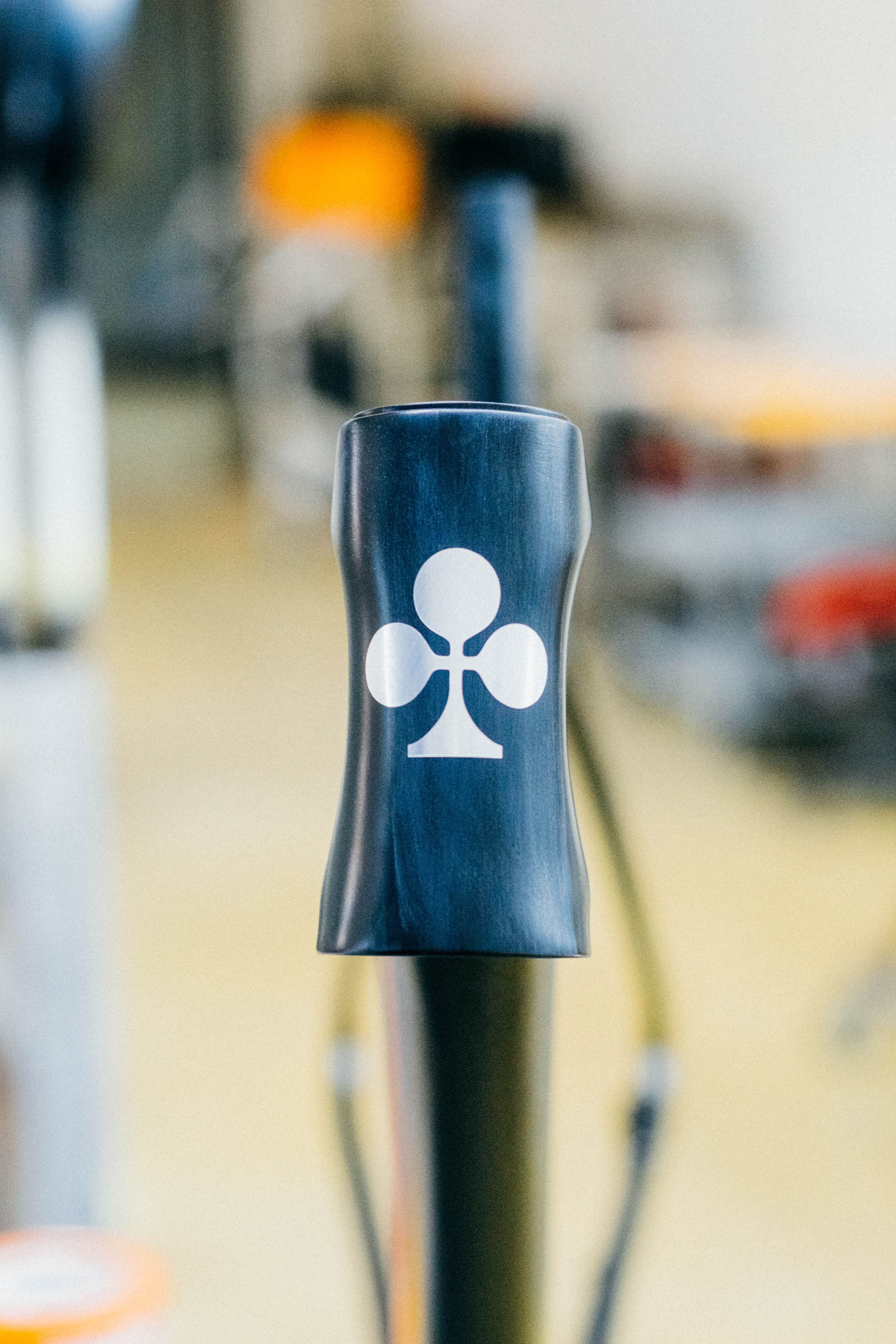
Yeah, that's as straight as you'd ever be able to get it
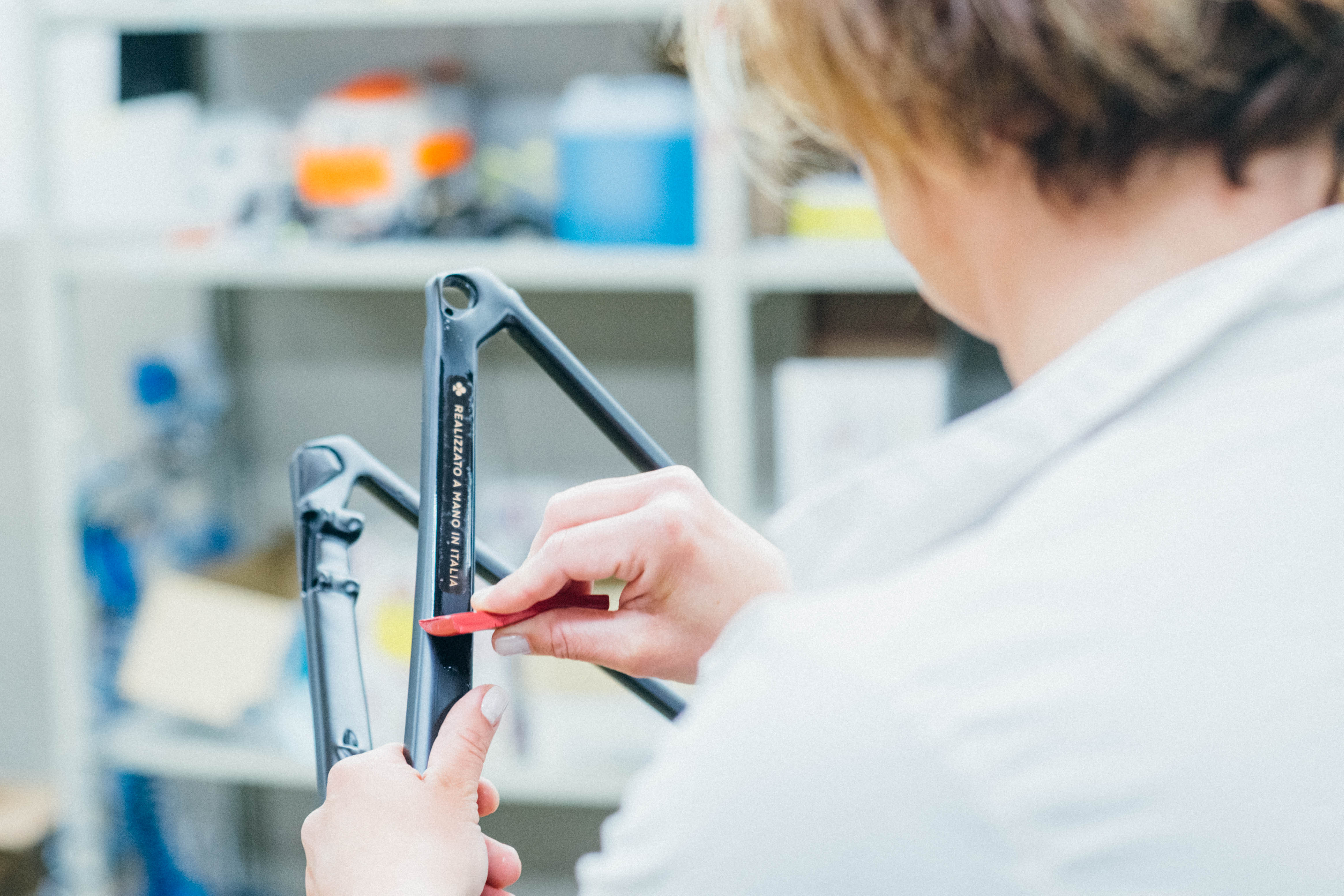
The final "Made By Hand in Italy" decals are applied, which aren't entirely justified on the V4Rs, before a final topcoat of lacquer is applied
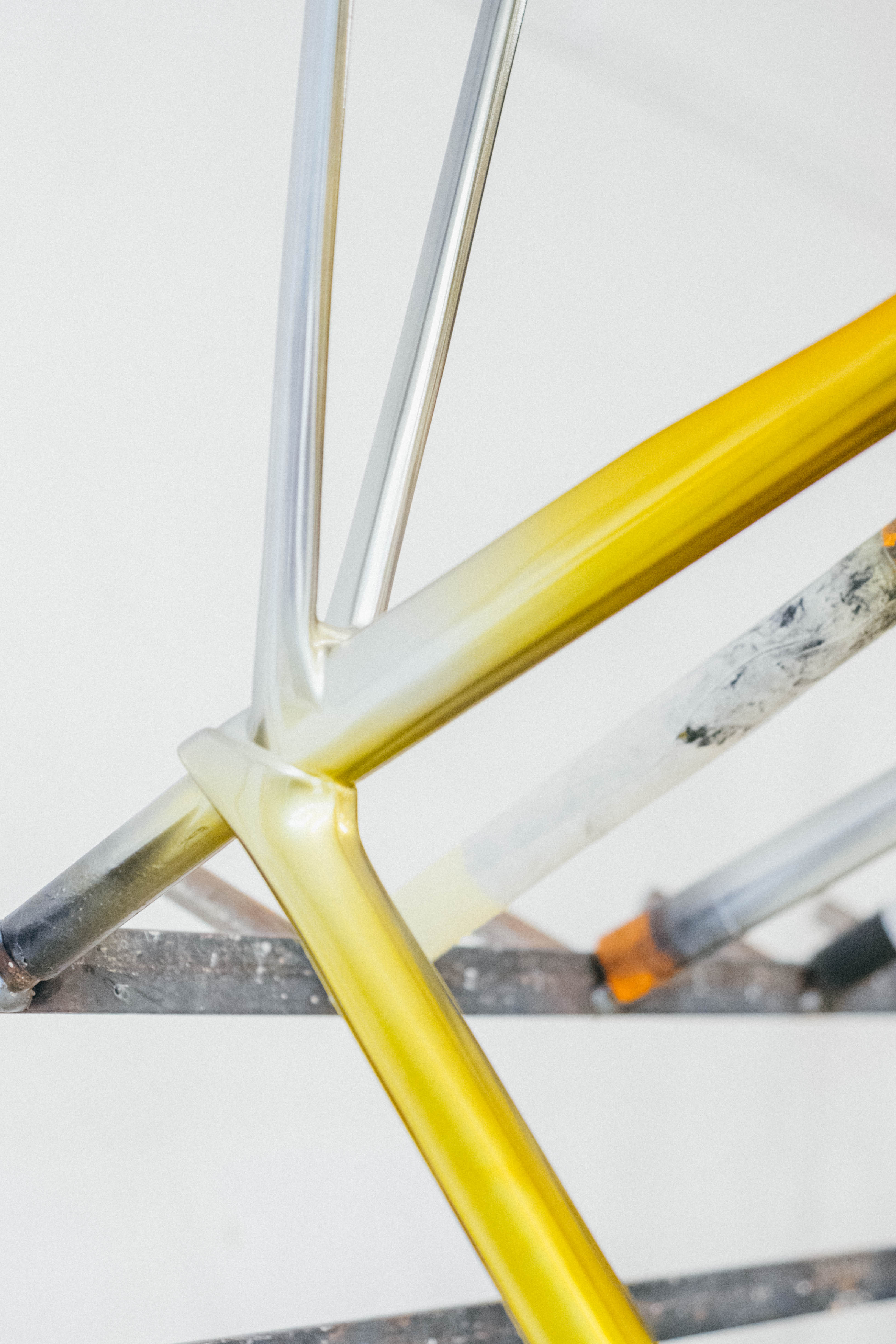
Finished frames are racked up for a QC inspection
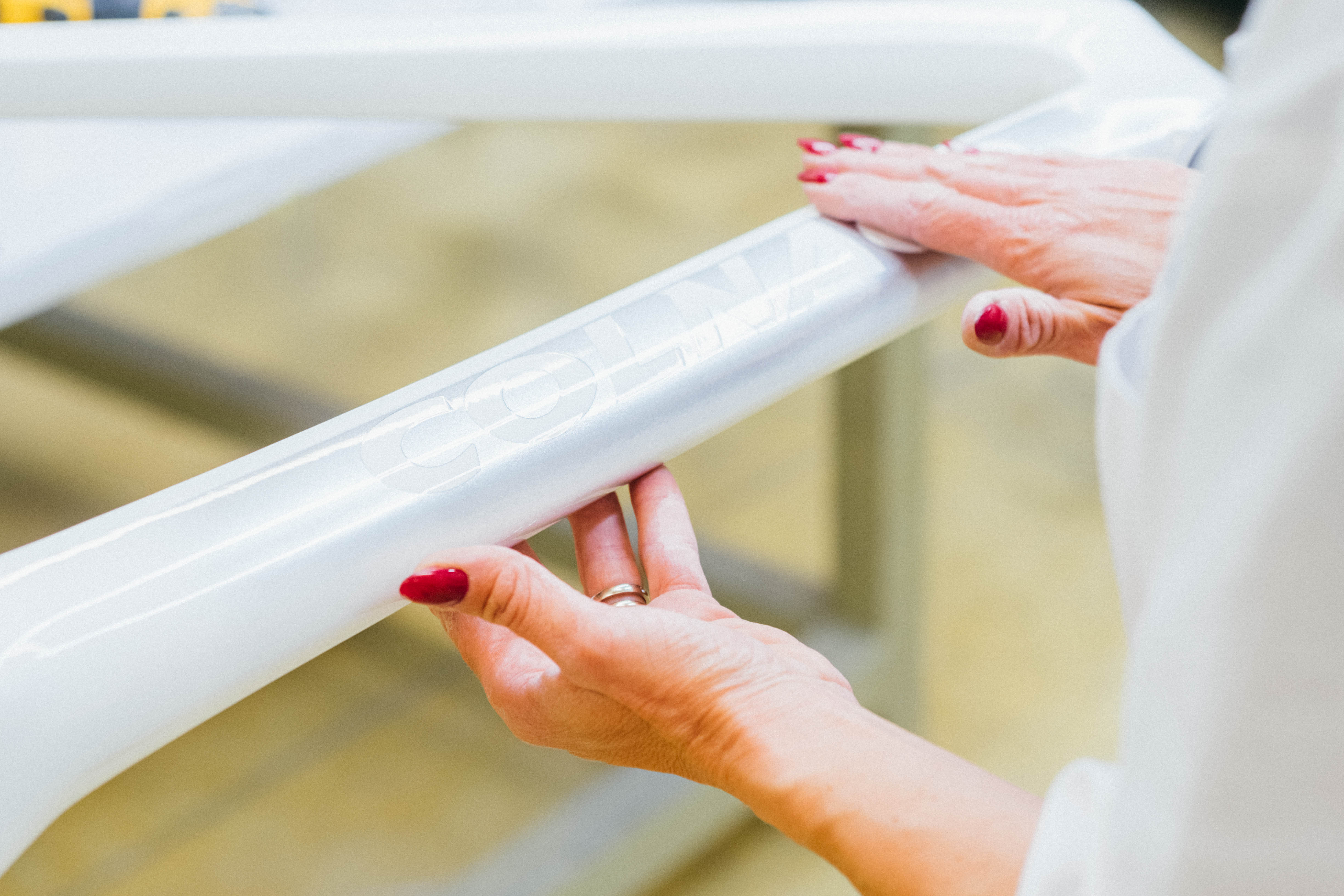
Fingertips are more sensitive than eyes; if you can feel it you'll see it eventually, so any minor blemishes in the top coat are buffed and polished away before the frames head back to Cambiago
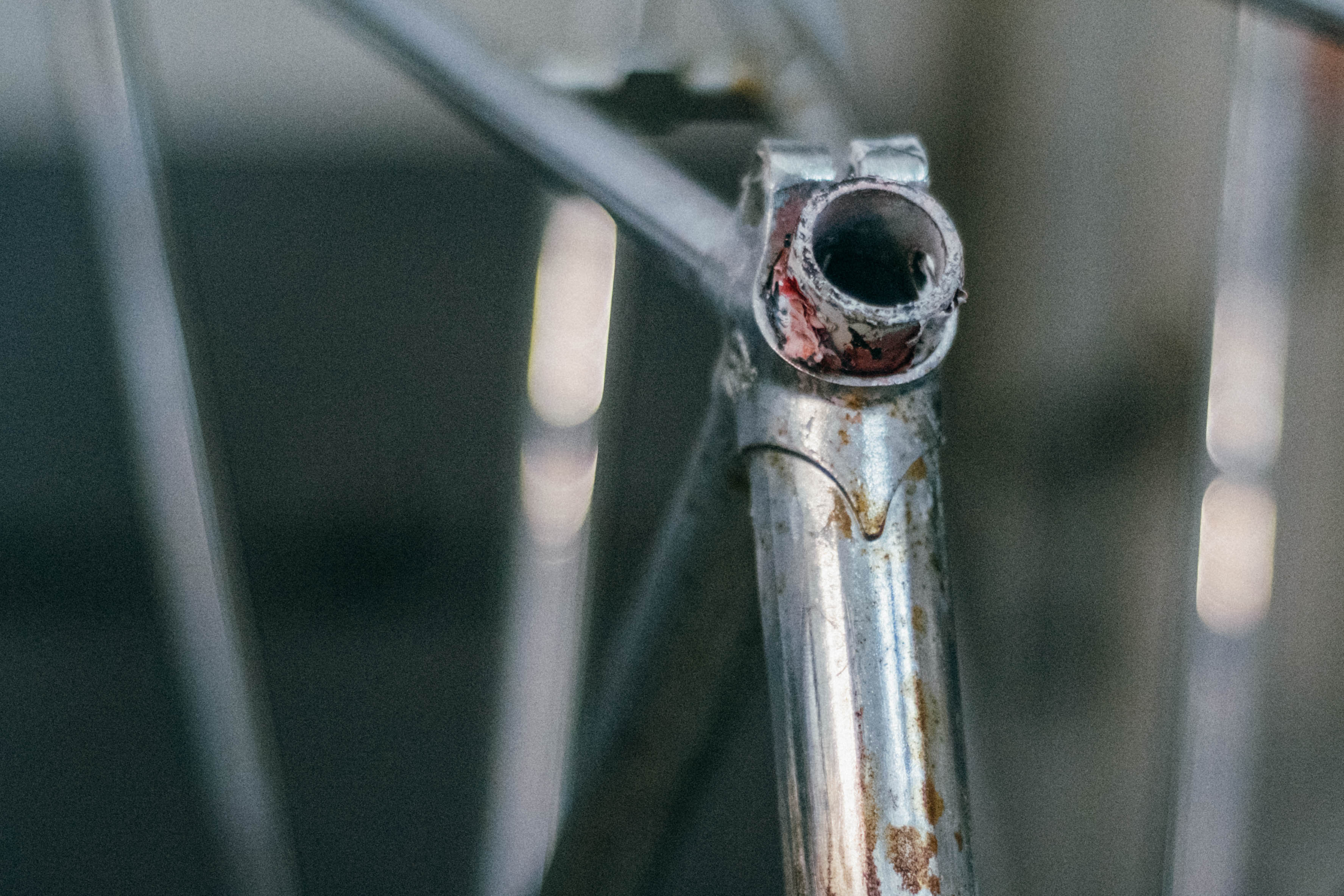
Steel frames racked up too long can show signs of corrosion, but nothing a quick buff won't sort out

Ernesto's presence watches over the office

However, it's Massimo who's responsible for all the distinctive visuals of famous Colnagos

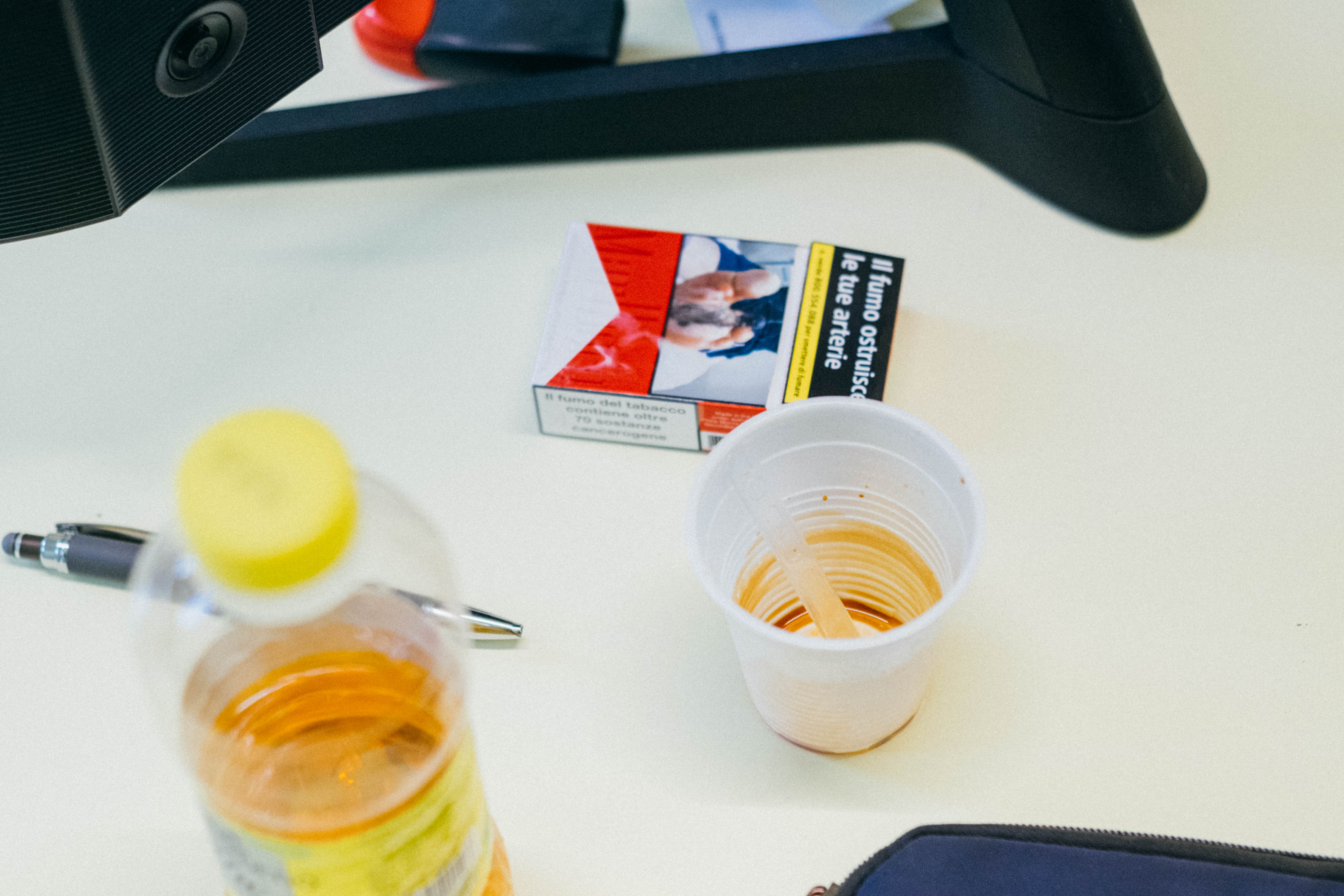
And all, from what I can tell, on a diet of caffeine, nicotine, and solvents
Hip replacements and titanium lugs
If Pamapaint felt like the past, and the factory floor the present, then Permedica, a medical implant factory a half hour's drive from Cambiago, definitely felt like the future. It specialises in producing stainless steel and titanium bits and bobs to replace hips, knees, shoulders, and any other worn-out bits of the human body. Stick with me a second.
The production facility was space age, with four-axis lathes, CNC machines, milky lubricant spraying in sealed booths, and, in a series of side rooms, the facilities for additive titanium manufacturing; 3D printing to you and me. Alongside all the bionic bodyparts, this is where the lugs for the titanium versions of the Colnago C68 and the C68 Allroad are made, along with one-off pieces like the Giro d’Italia trophy homage water bottles for the all-gold C68.
Printing with titanium is a little different to that of plastic. Given that titanium melts at 1668 degrees Celcius, you can’t very well soften it up and squeeze it through a nozzle. Instead, an extremely fine powder consisting of titanium, aluminium, and vanadium is evenly spread across a base plate before a high-power laser traces the print shape, locally amalgamating the powder into a solid alloy where required. Once one layer is complete another layer of powder is deposited by a moving arm that’s vaguely reminiscent of arcade coin dozer machines. Sadly I wasn’t permitted to force a two-cent piece into the mechanism.
The production of these lugs is definitely a side quest for Permedica compared to the volumes of bionic hips they churn out, but the QC is still no less intricate. Each batch is inspected before being sent back up the road to Cambiago, primarily to make sure the surface finish is appropriate for being painted.
There’s every chance that these parts could be ordered in from elsewhere, anywhere in the world, for less, but that would void the fact that the C series bikes genuinely are, from the production of the constituent parts themselves through the paint, to the finished product being shipped out, made by hand in Italy. Whether that adds any real value is down to the consumer, but it certainly helps maintain the brand’s identity as a true staple of Italian cycling.
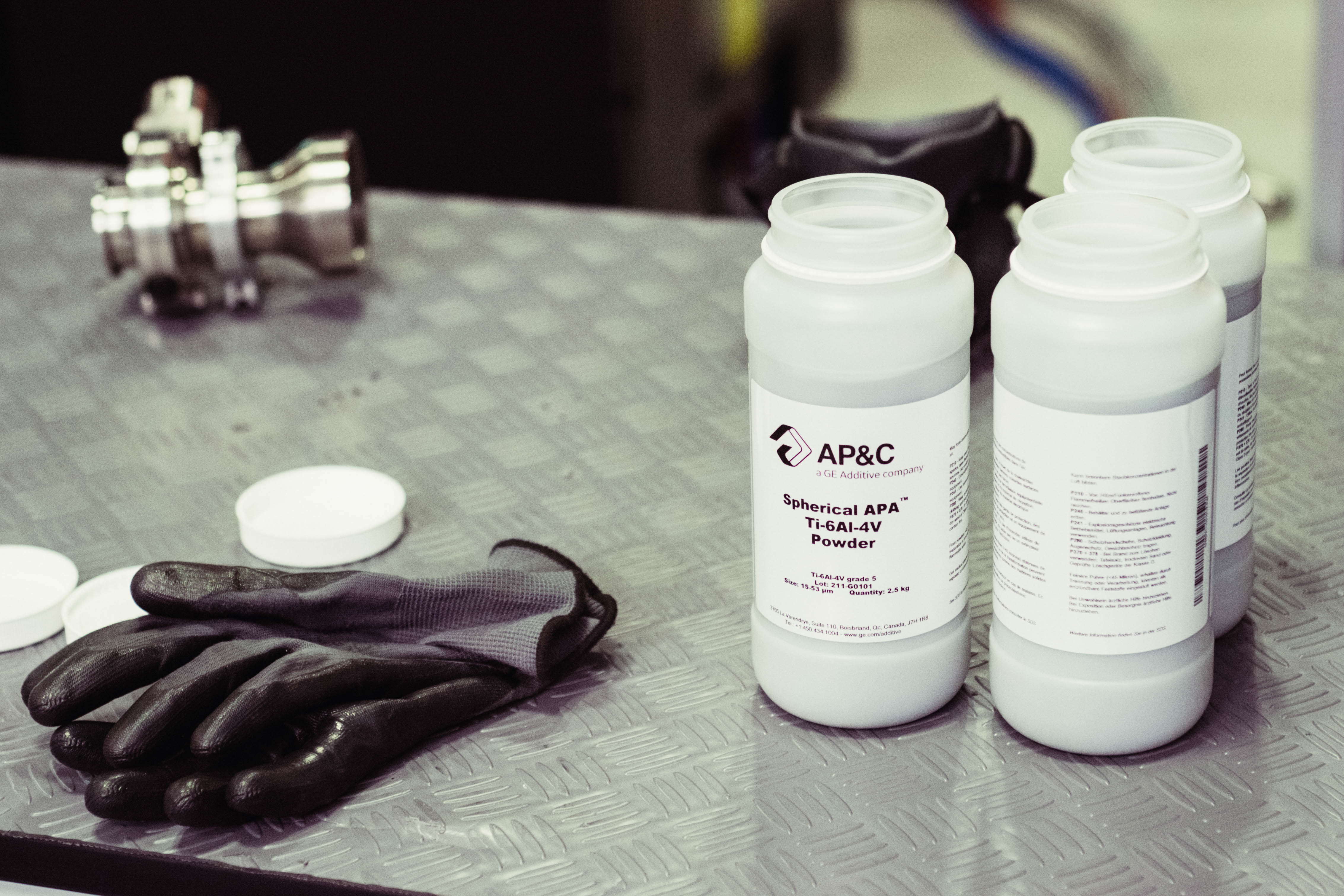
Powdered alloy in plastic tubs is the basis for space age component creation
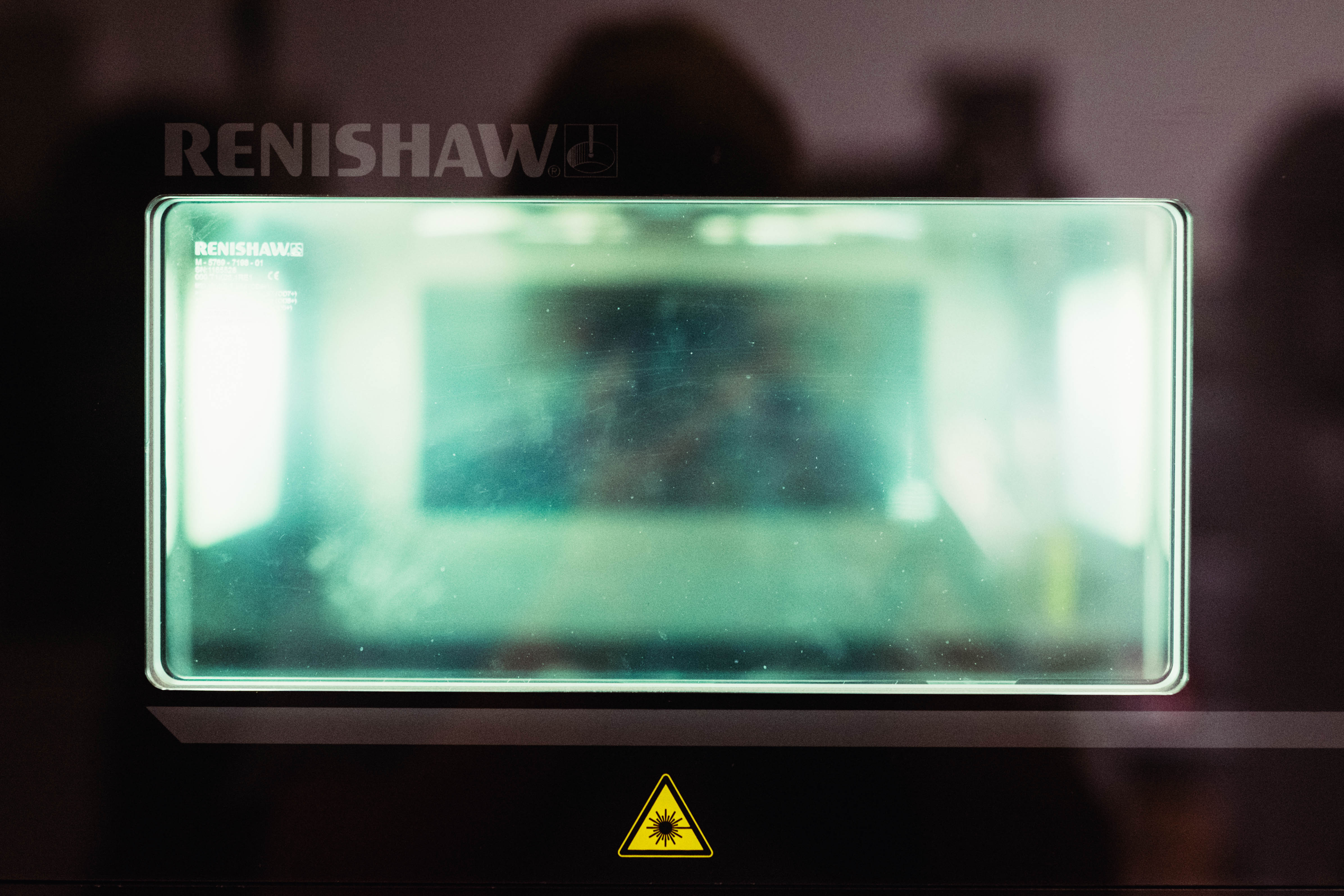
Behind the tinted glass on automated machines, titanium parts are 3D printed
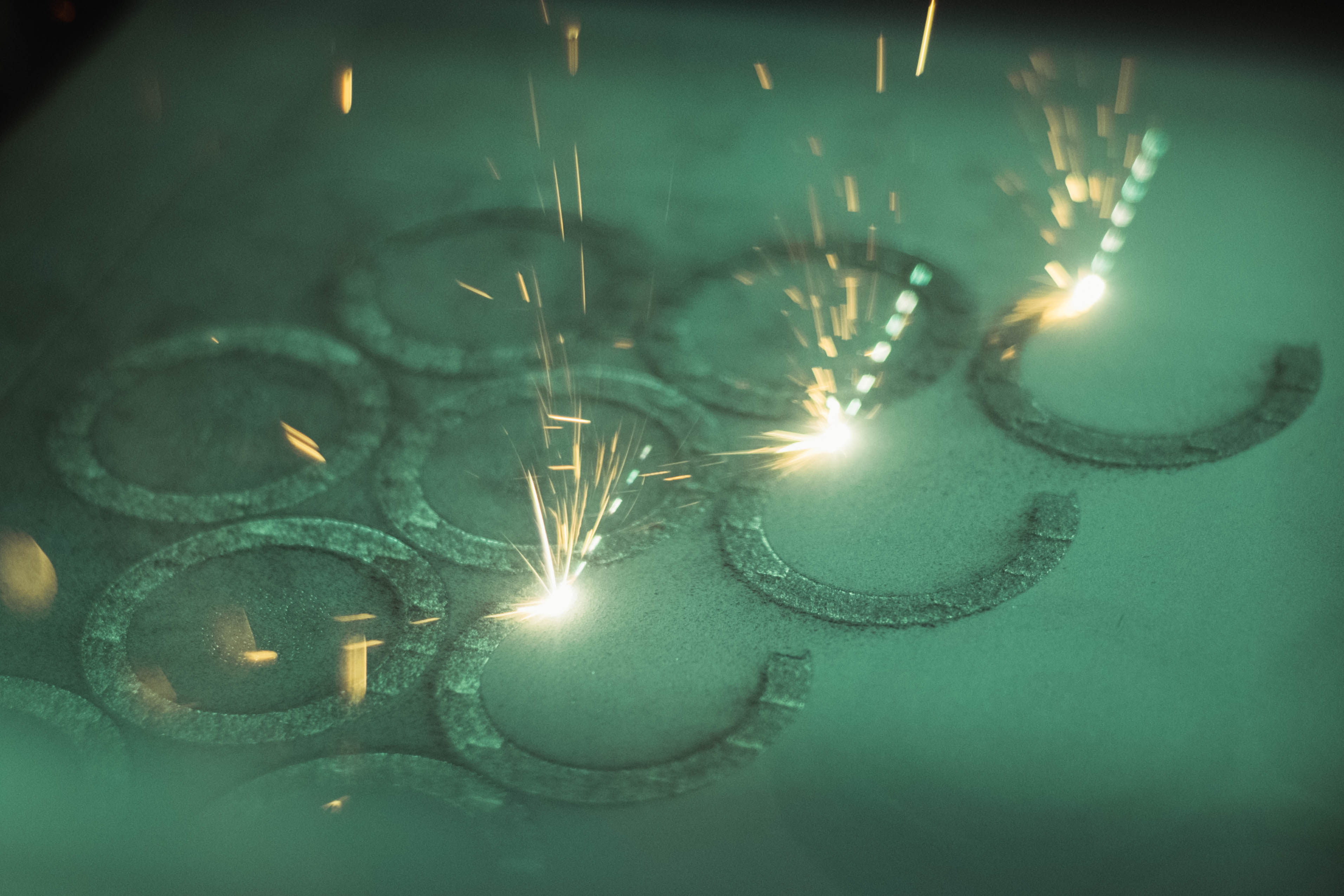
High powered lasers locally melt and alloy the powder into layer upon layer of solid metal, eventually creating the lugs used in the titanium C-Series bikes
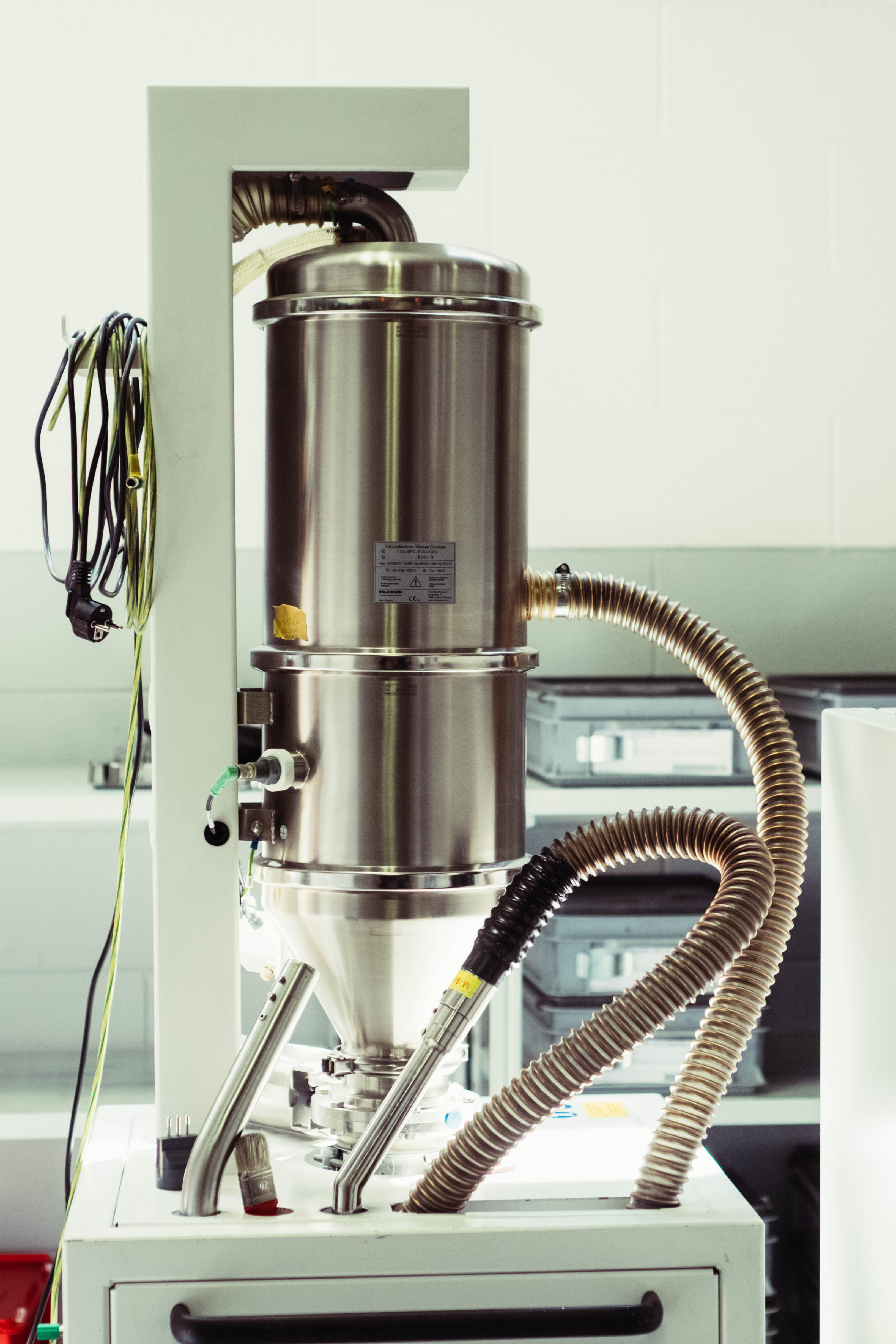
Truth be told I'm not absolutely sure what this is, but I am fairly sure it's some kind of powder addition/extraction unit. Like a Henry Hoover, but one that's watched 2001: A Space Odyssey too many times
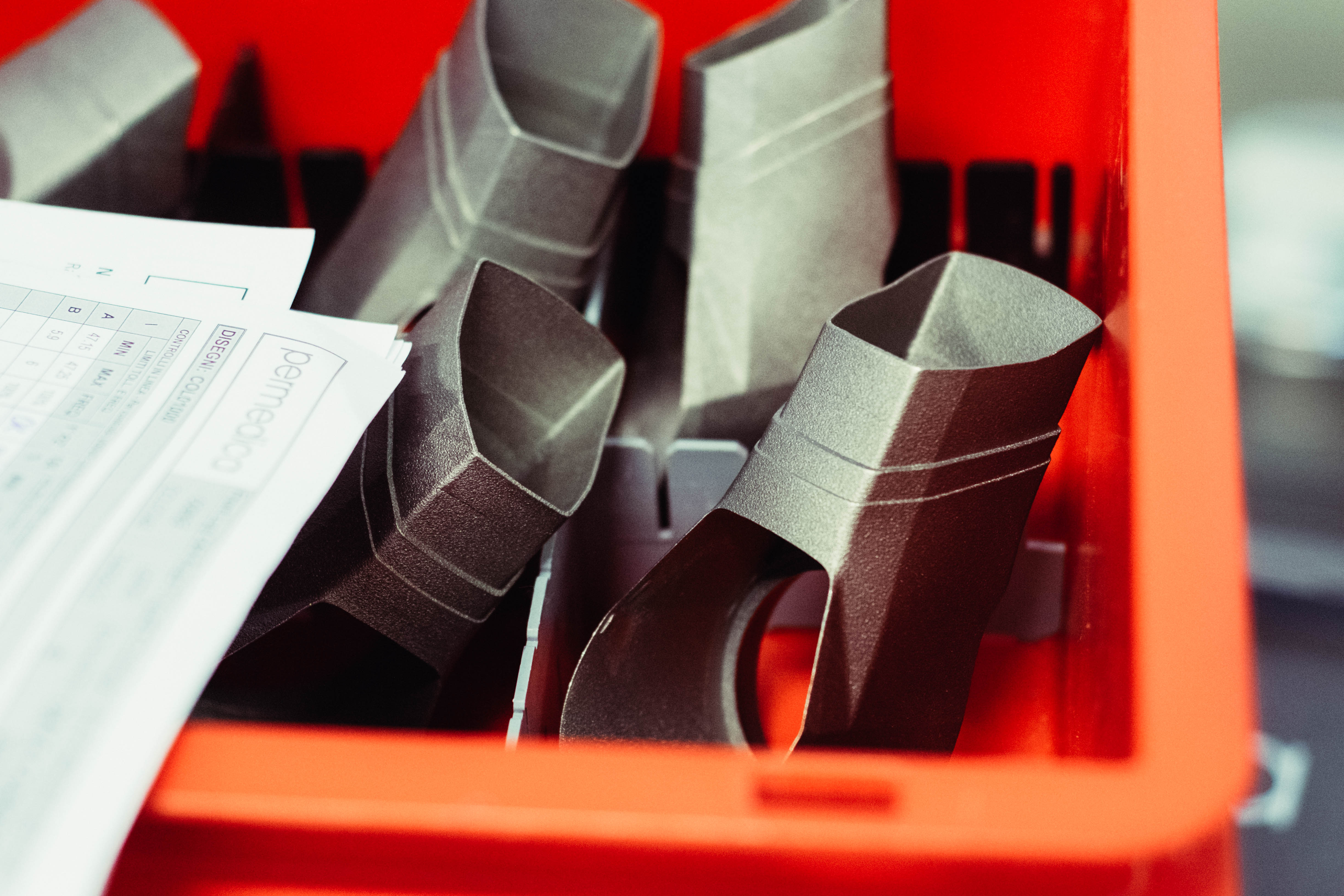
Finished lugs are boxed up for a QC inspection, as they would be if they were hips or knees
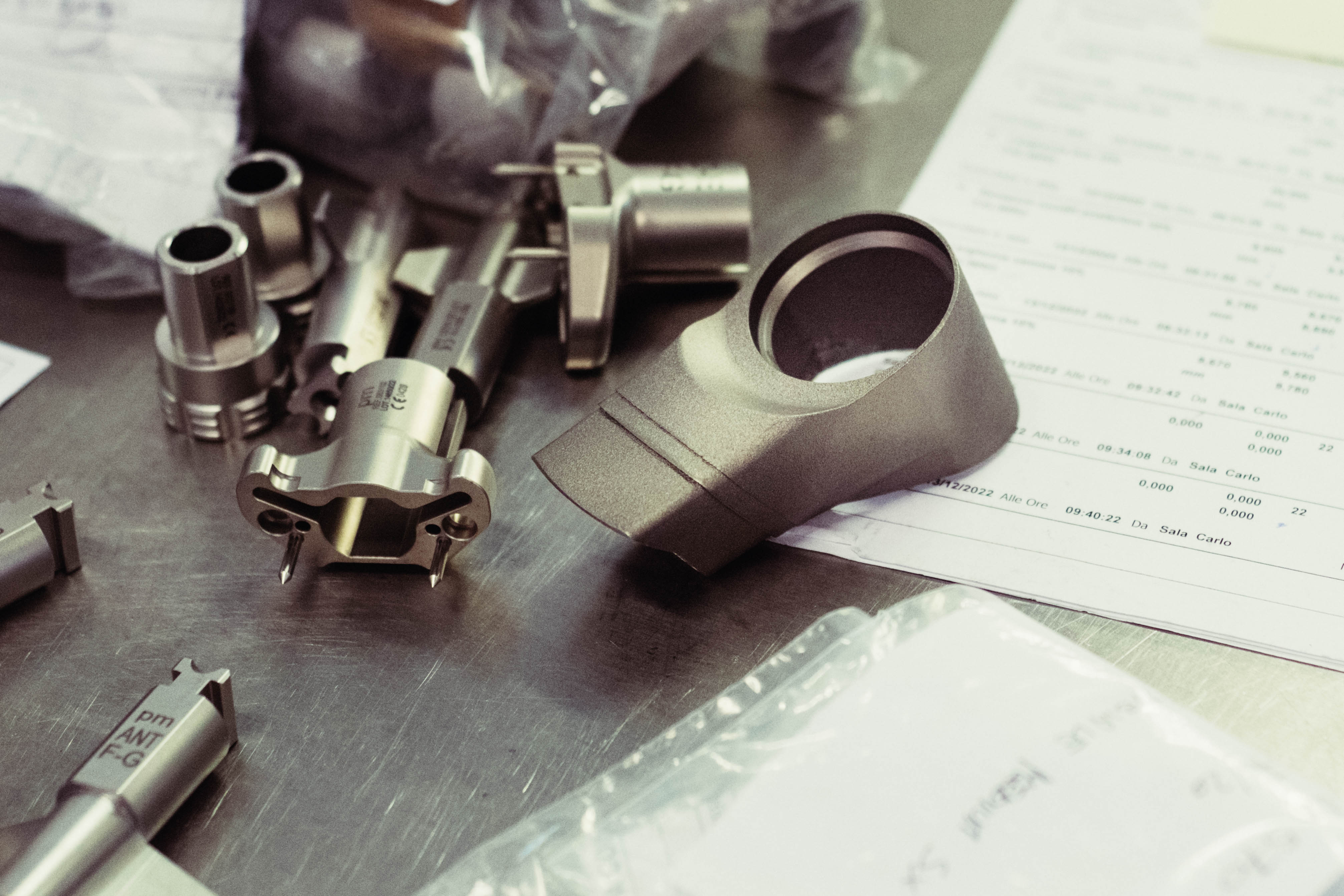
Ti lugs are a tiny fraction of the factory output, and in context you could easily mistake them for something medical
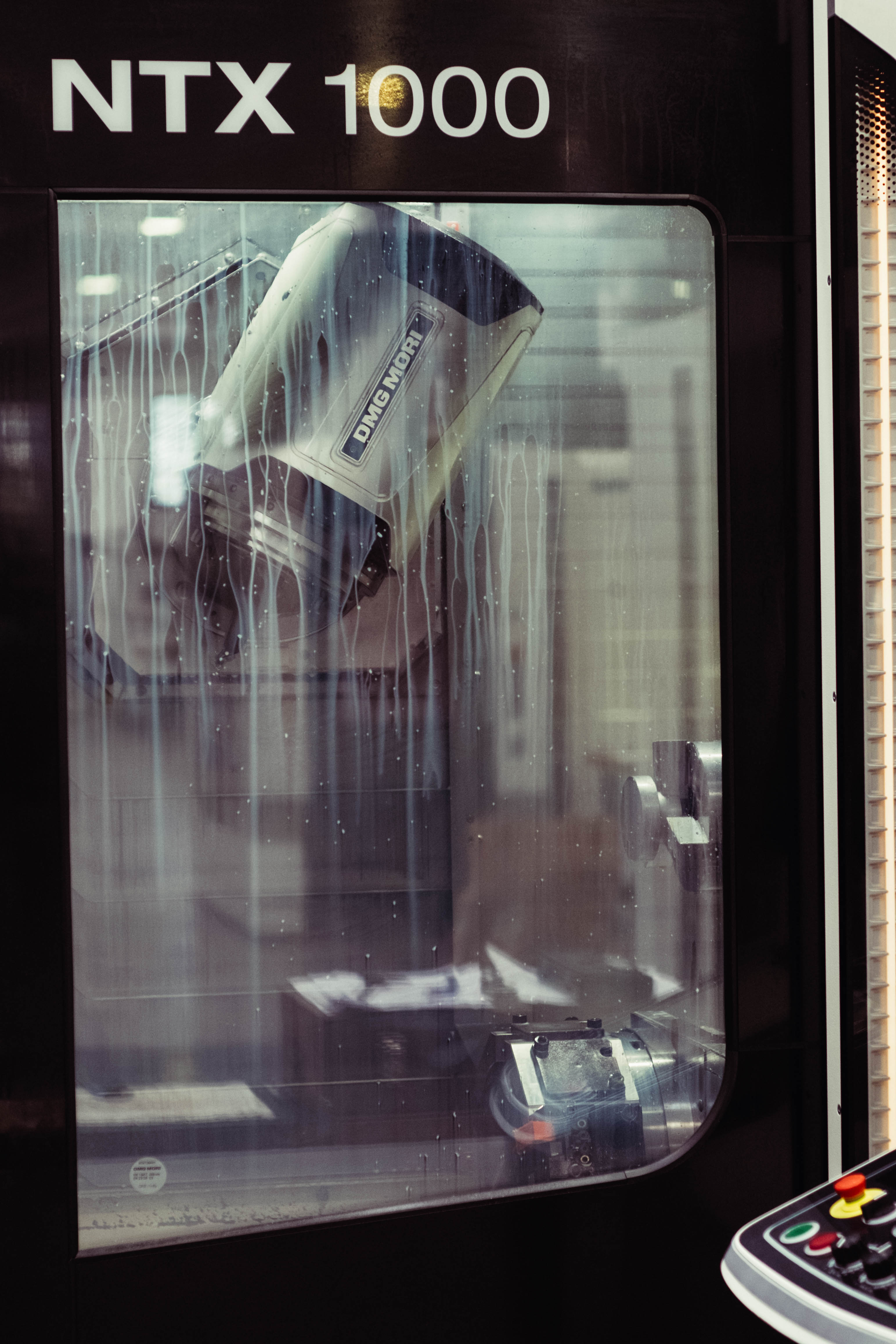
In the finishing area, huge banks of machines undertake processes unknown to polish and hone and mill and machine, none of which are necessary for a headtube lug; the human body has tolerances far smaller than even the most artisanal of Italian bicycles
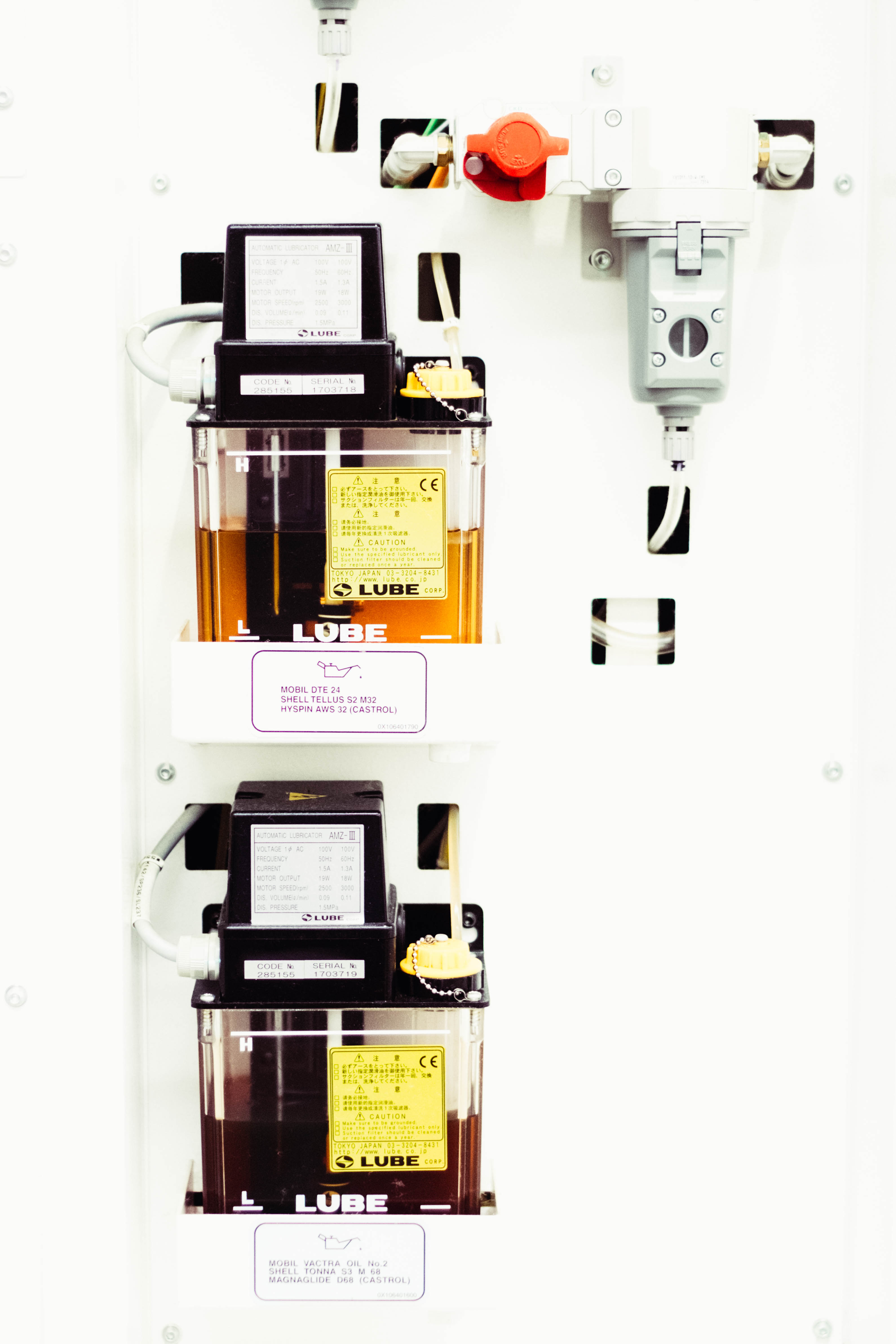
Enough for a couple of chains do we reckon?
What’s in a Cyclingnews subscription? We use our subscription fees to be able to keep producing all our usual great content as well as more premium pieces like this one. Find out more here.


Will joined the Cyclingnews team as a reviews writer in 2022, having previously written for Cyclist, BikeRadar and Advntr. He’s tried his hand at most cycling disciplines, from the standard mix of road, gravel, and mountain bike, to the more unusual like bike polo and tracklocross. He’s made his own bike frames, covered tech news from the biggest races on the planet, and published countless premium galleries thanks to his excellent photographic eye. Also, given he doesn’t ever ride indoors he’s become a real expert on foul-weather riding gear. His collection of bikes is a real smorgasbord, with everything from vintage-style steel tourers through to superlight flat bar hill climb machines.